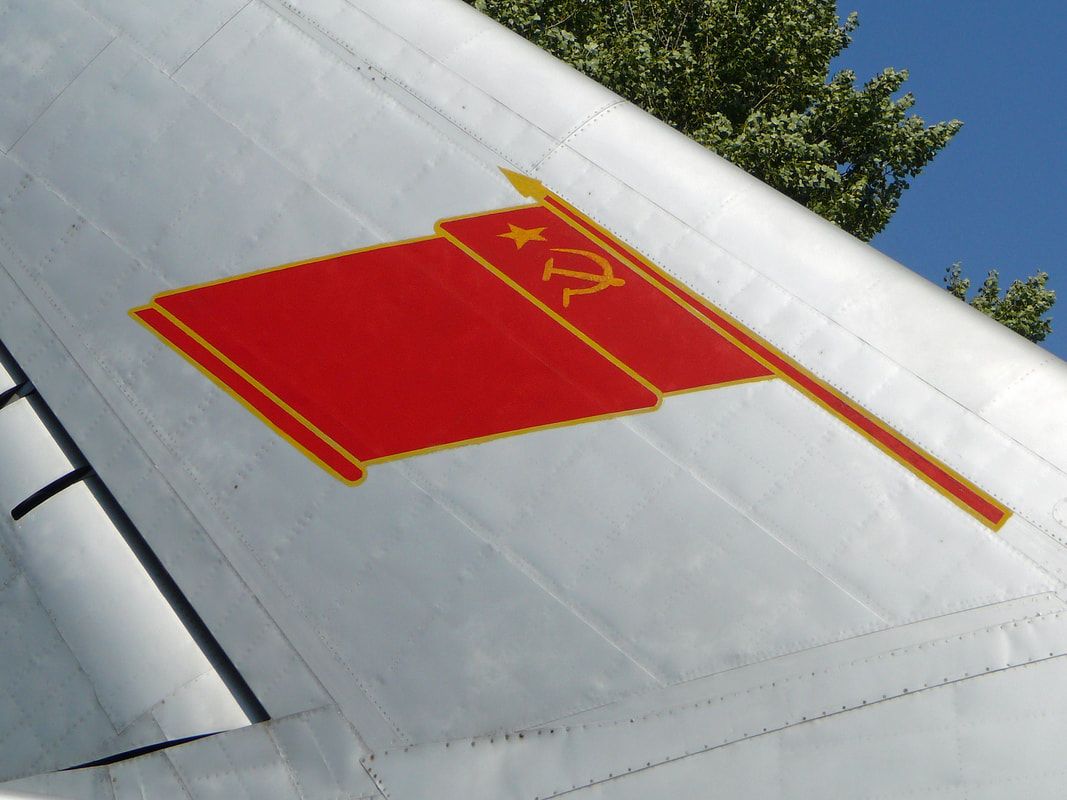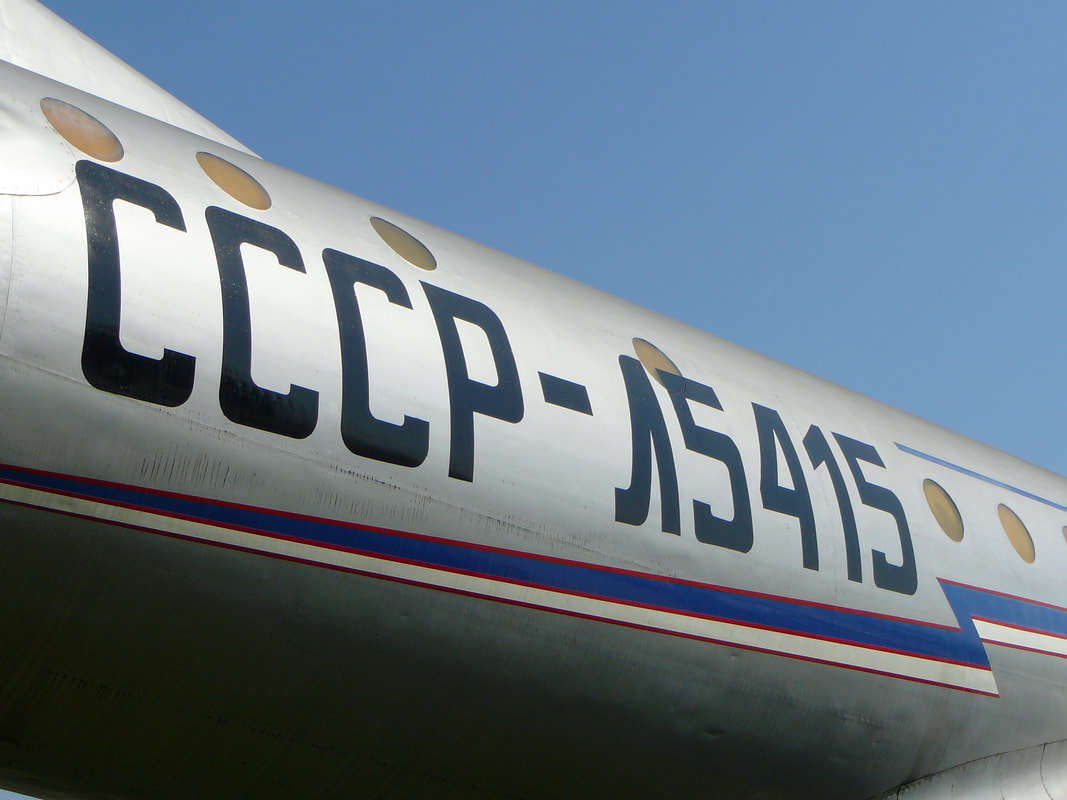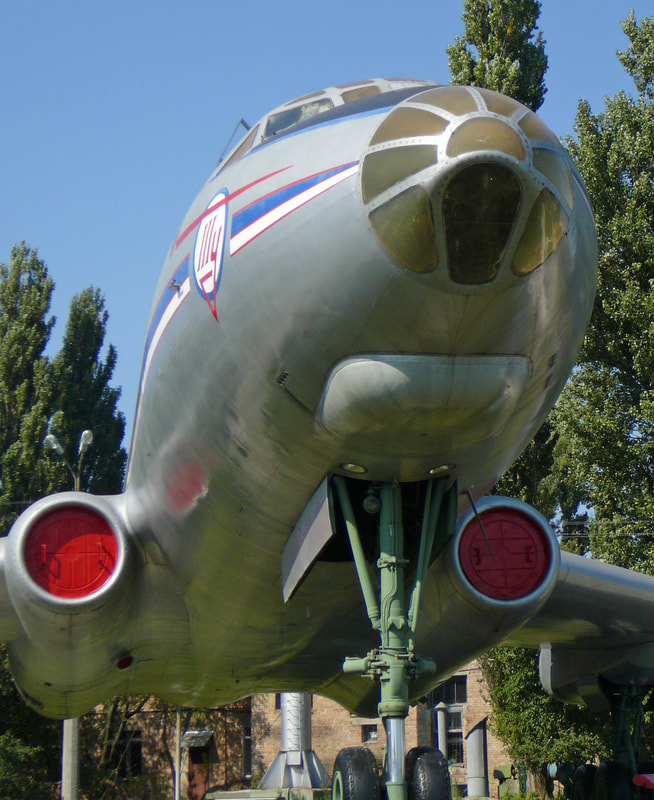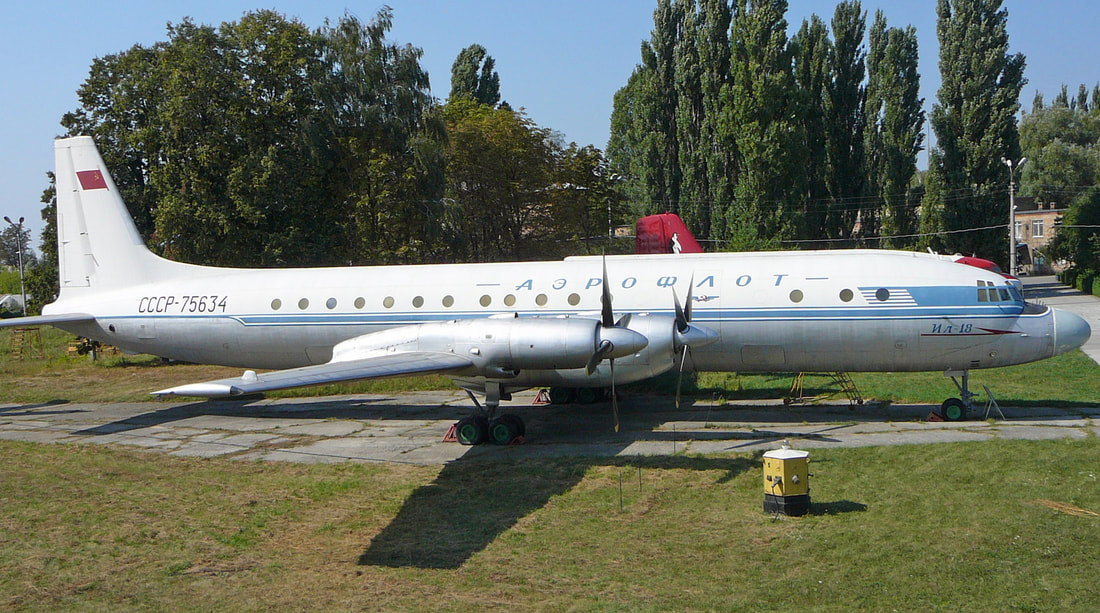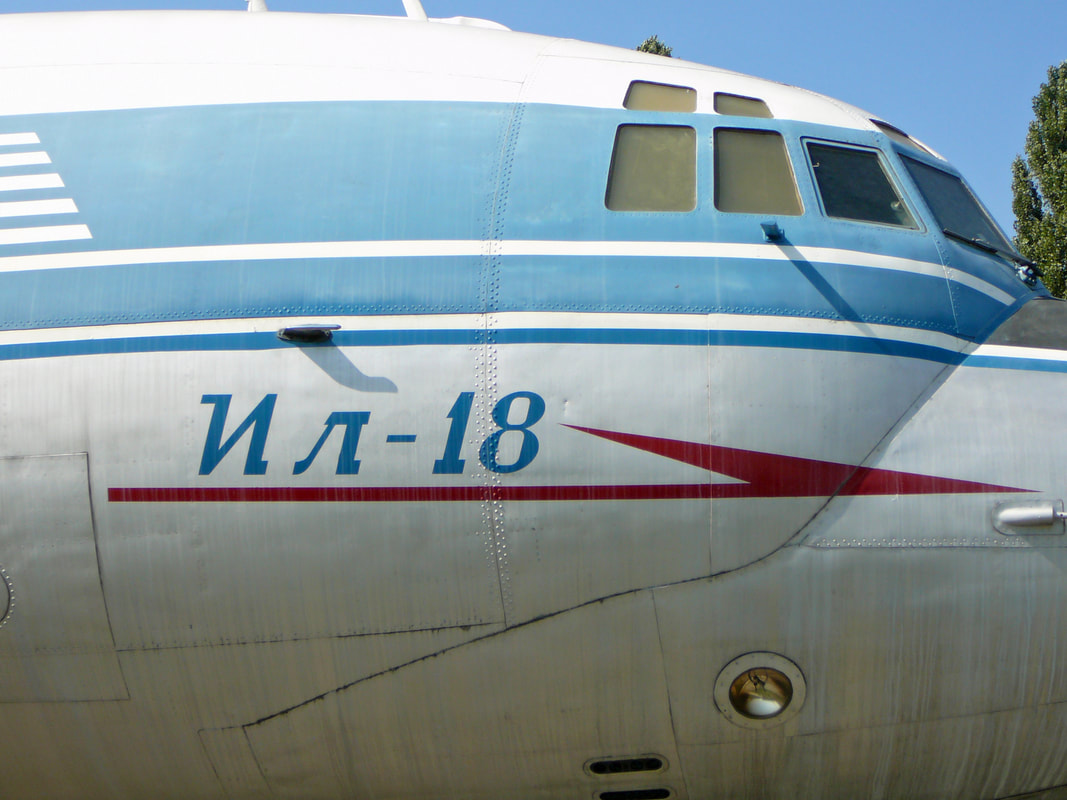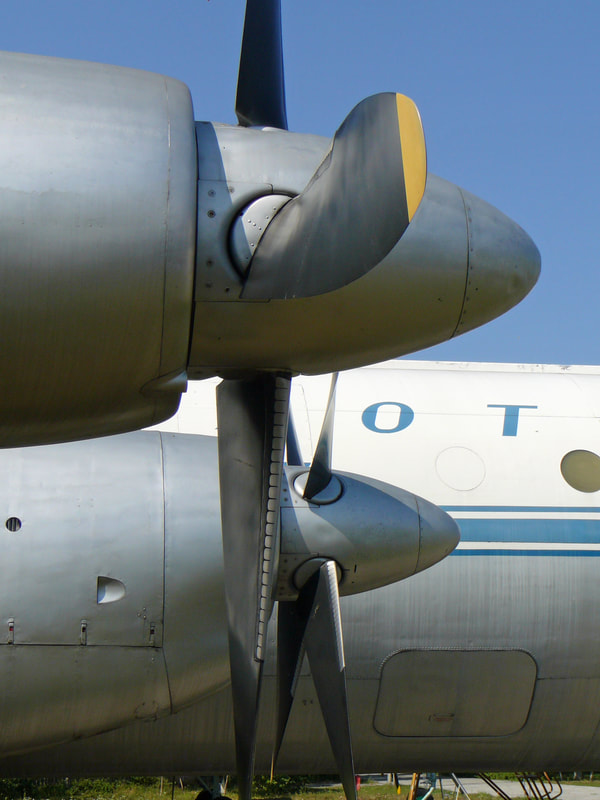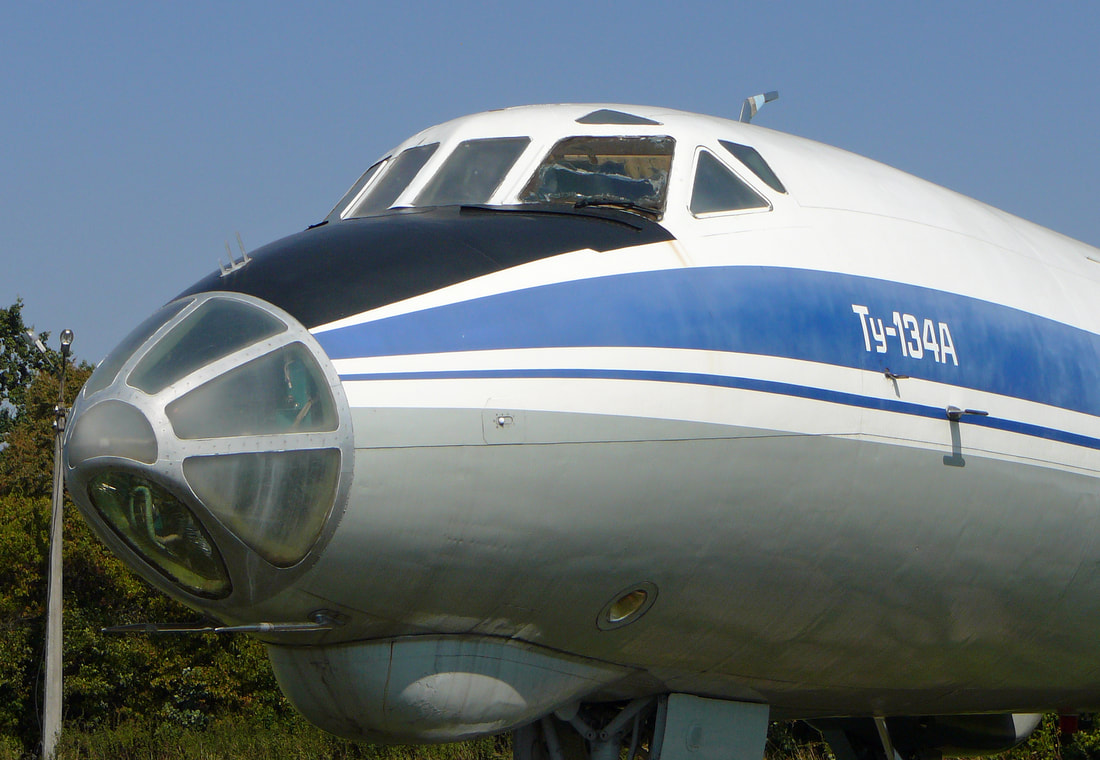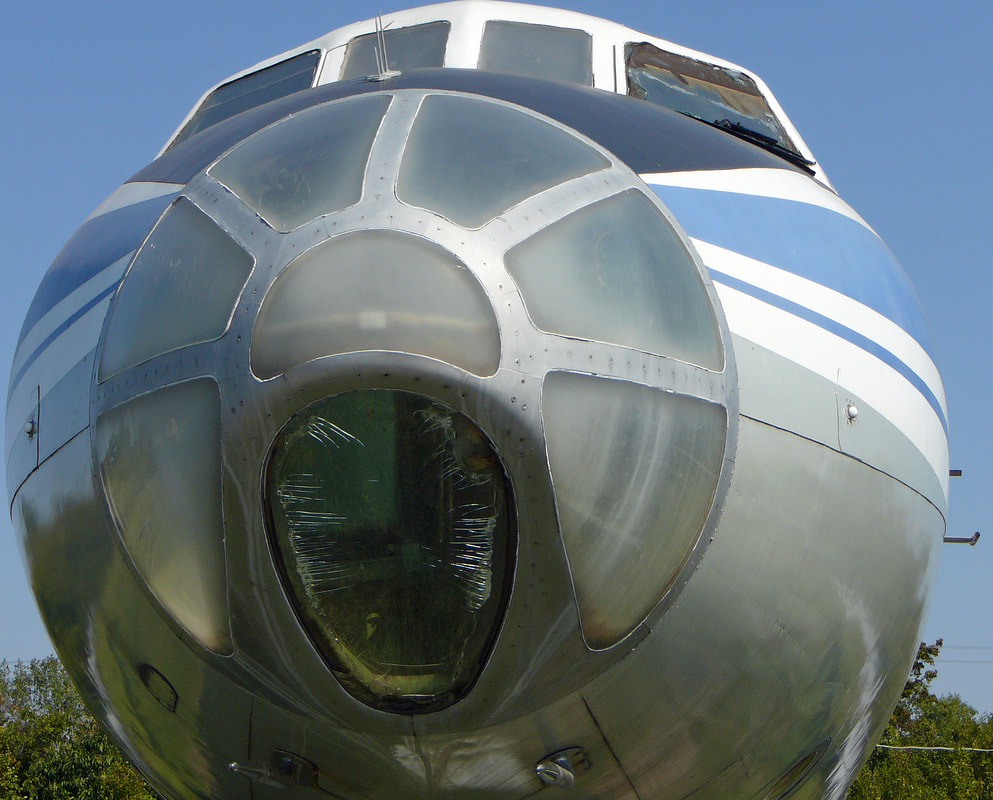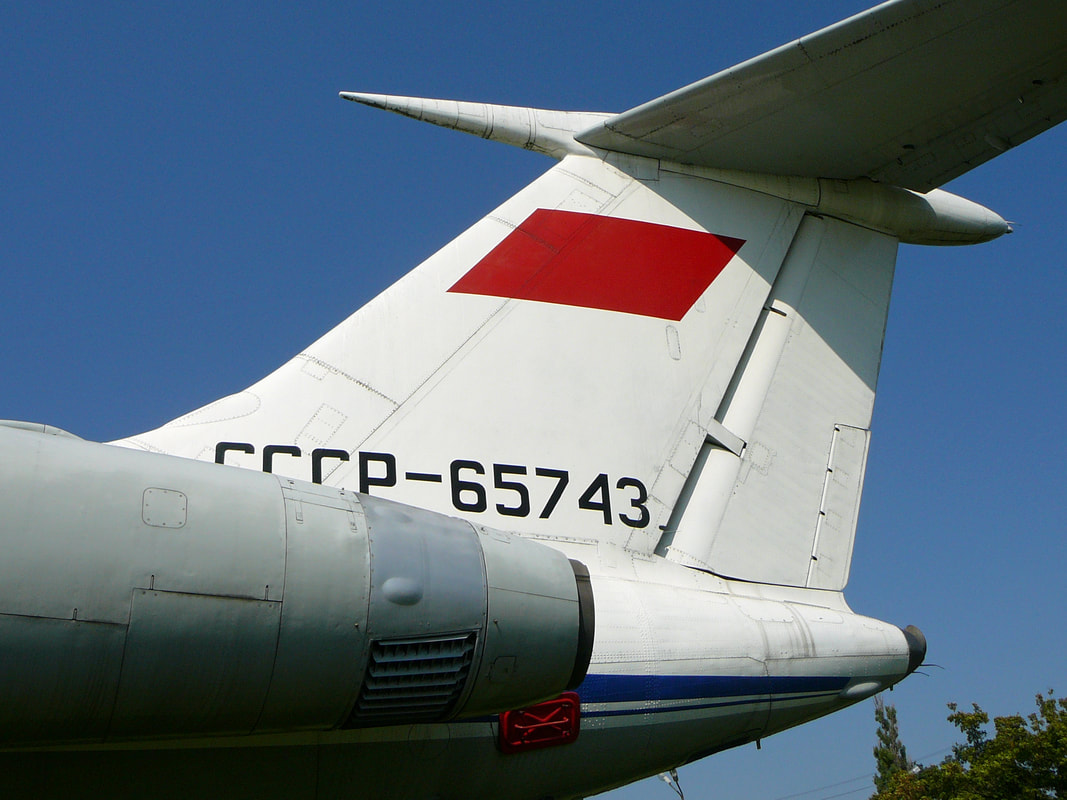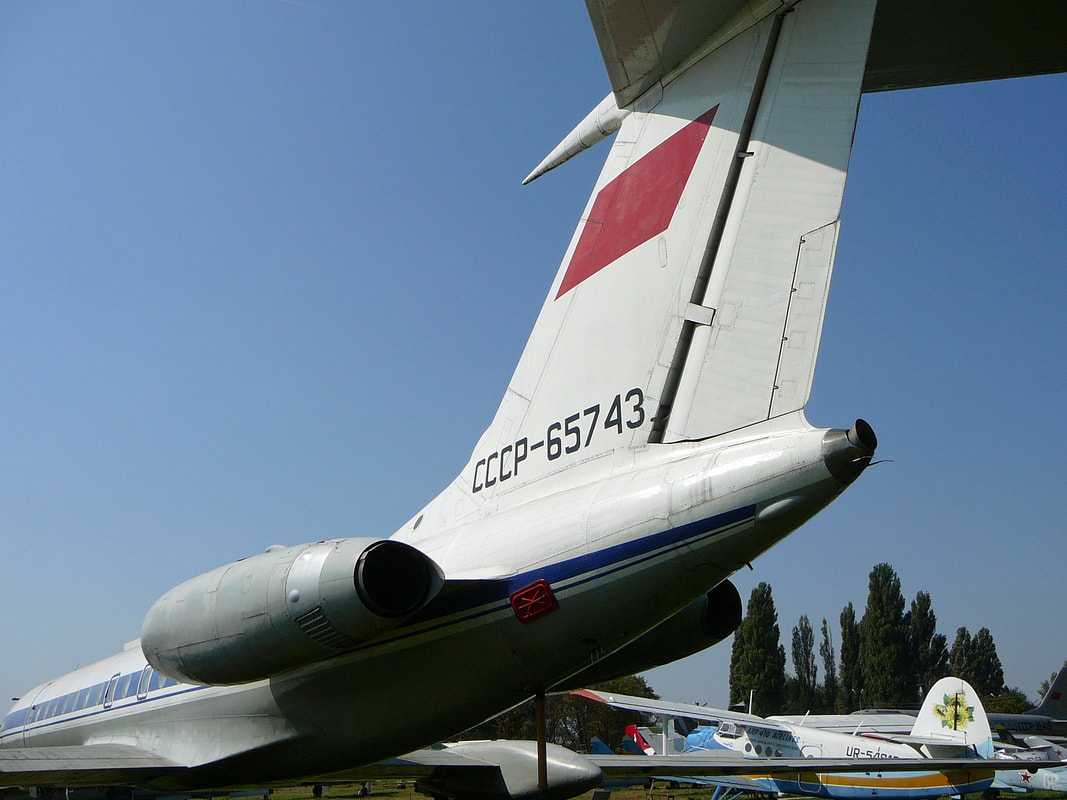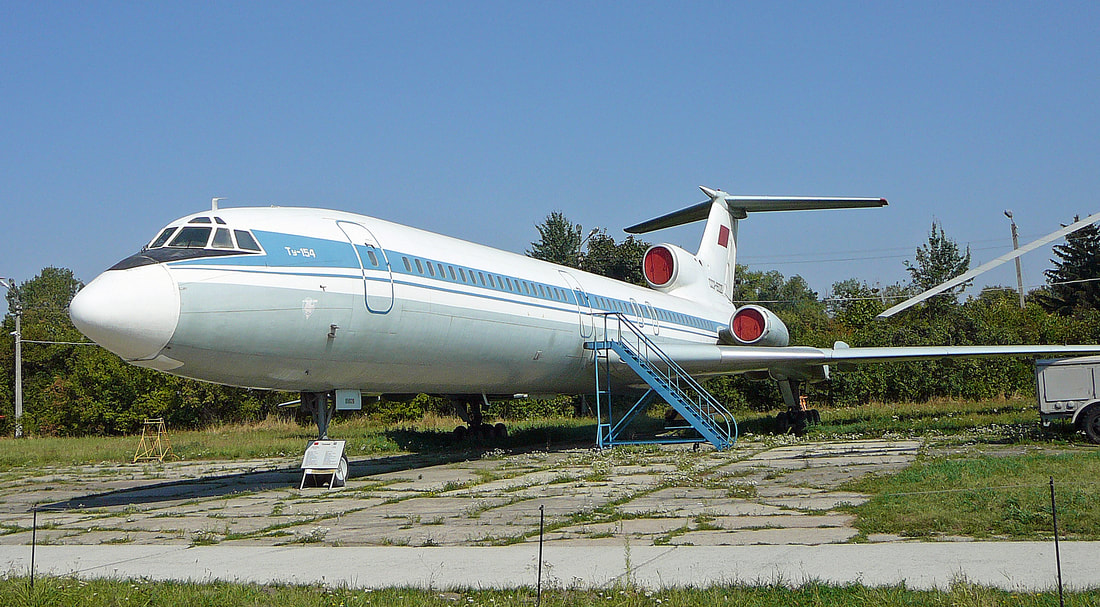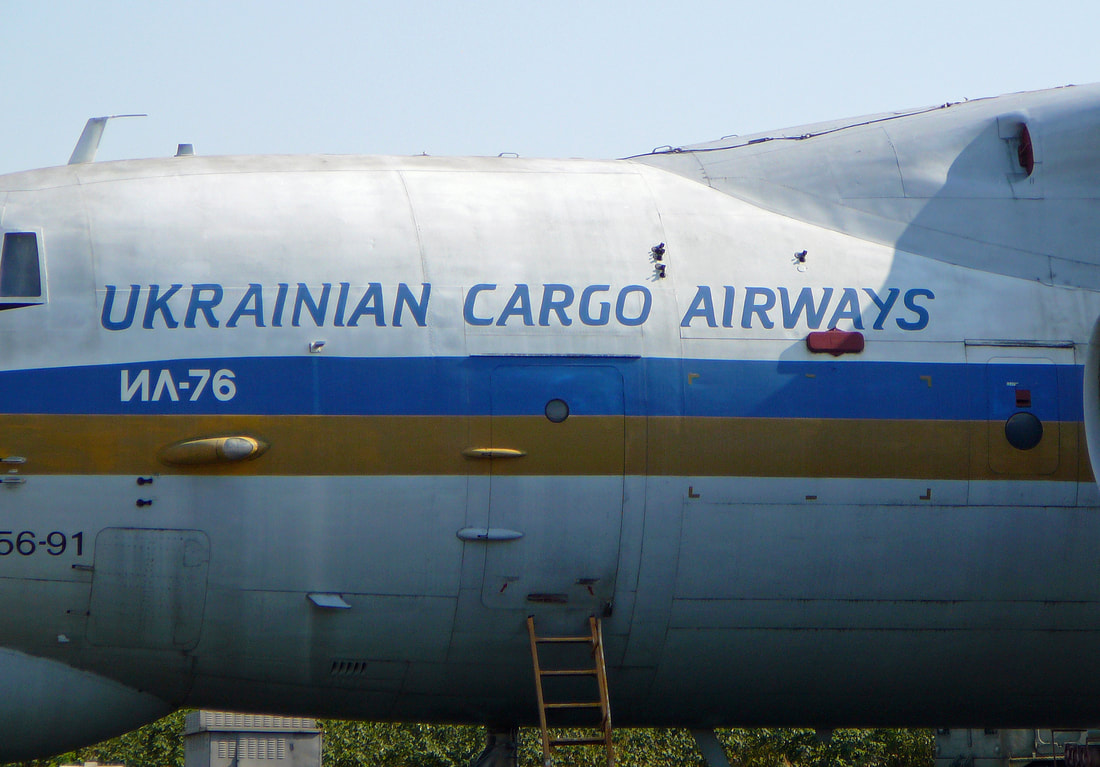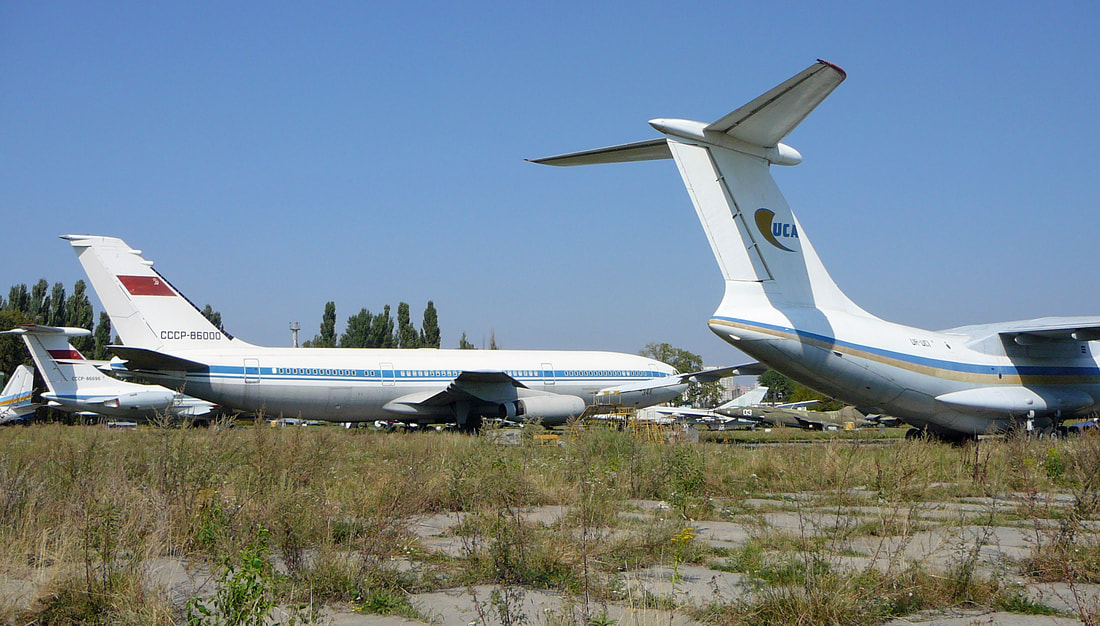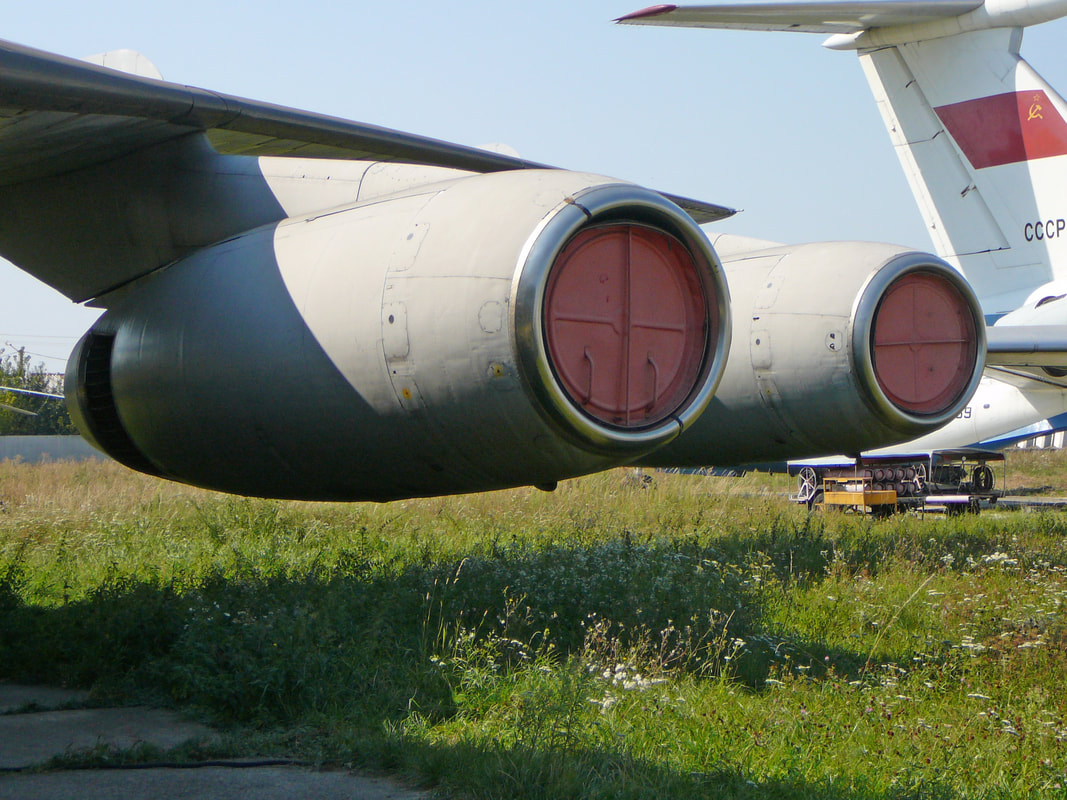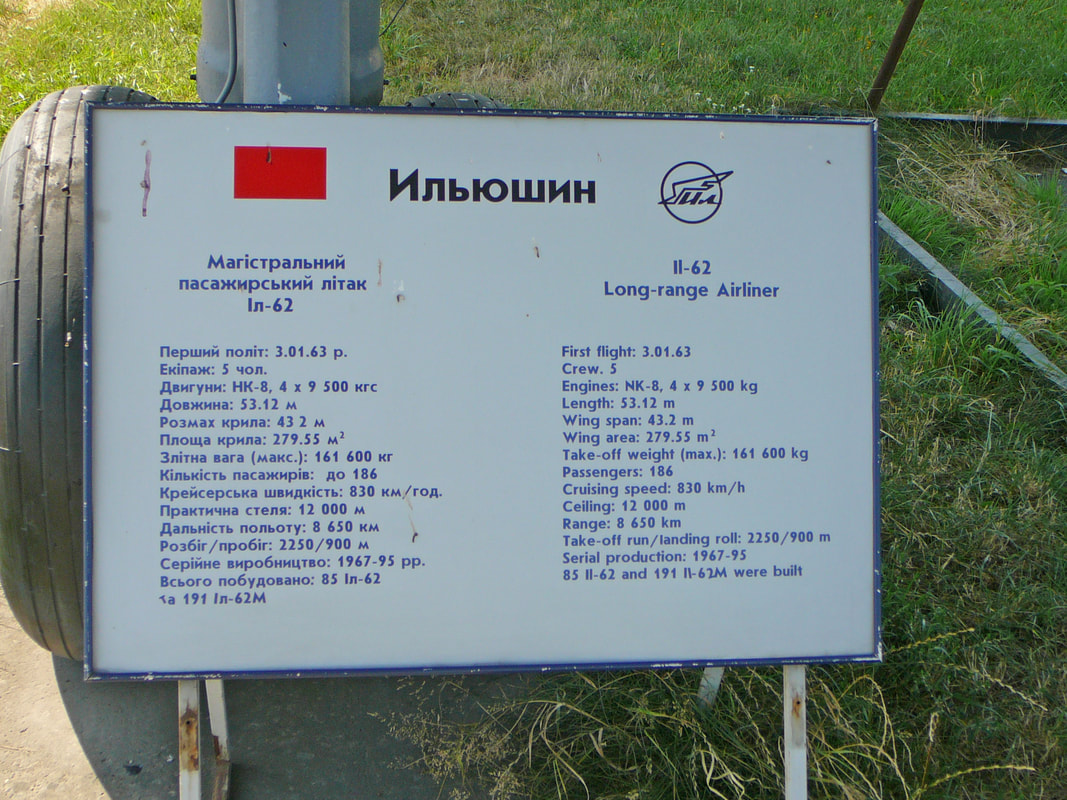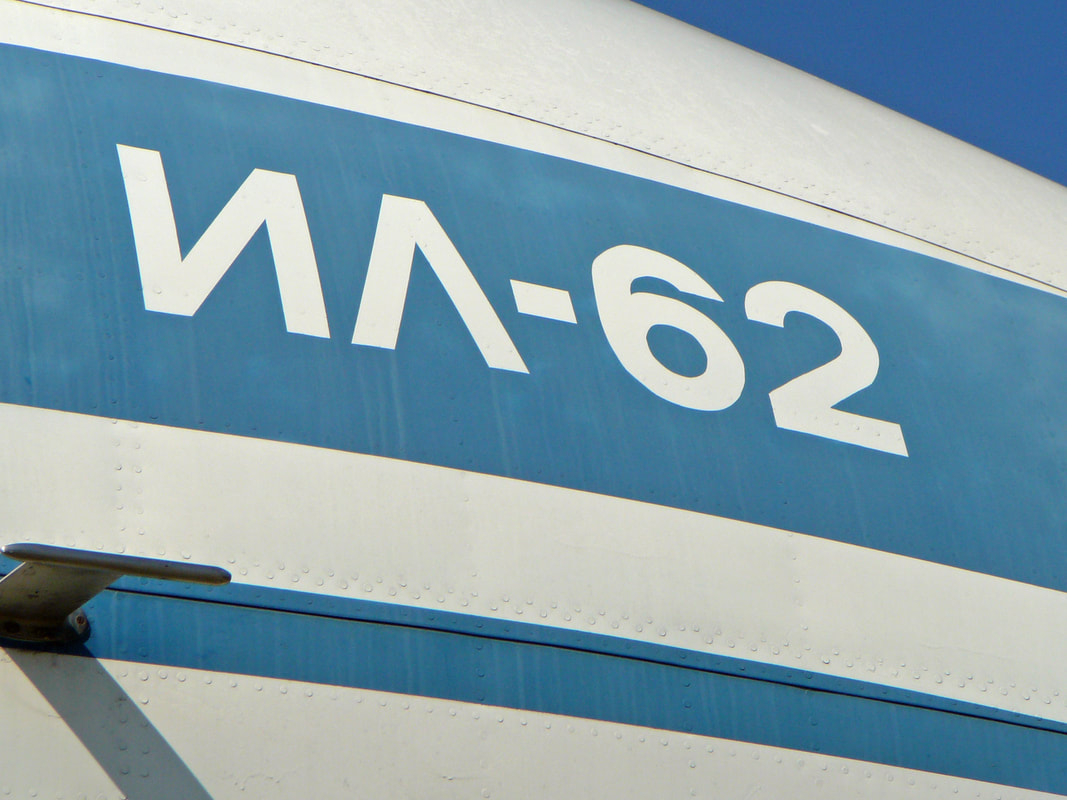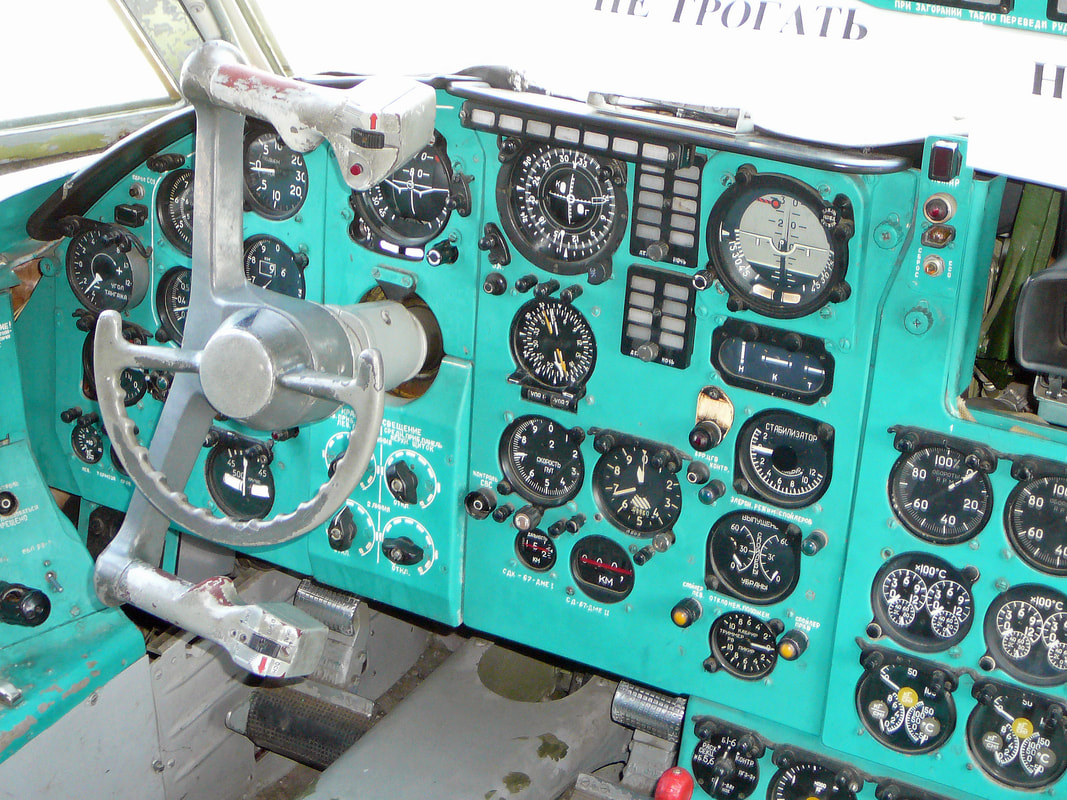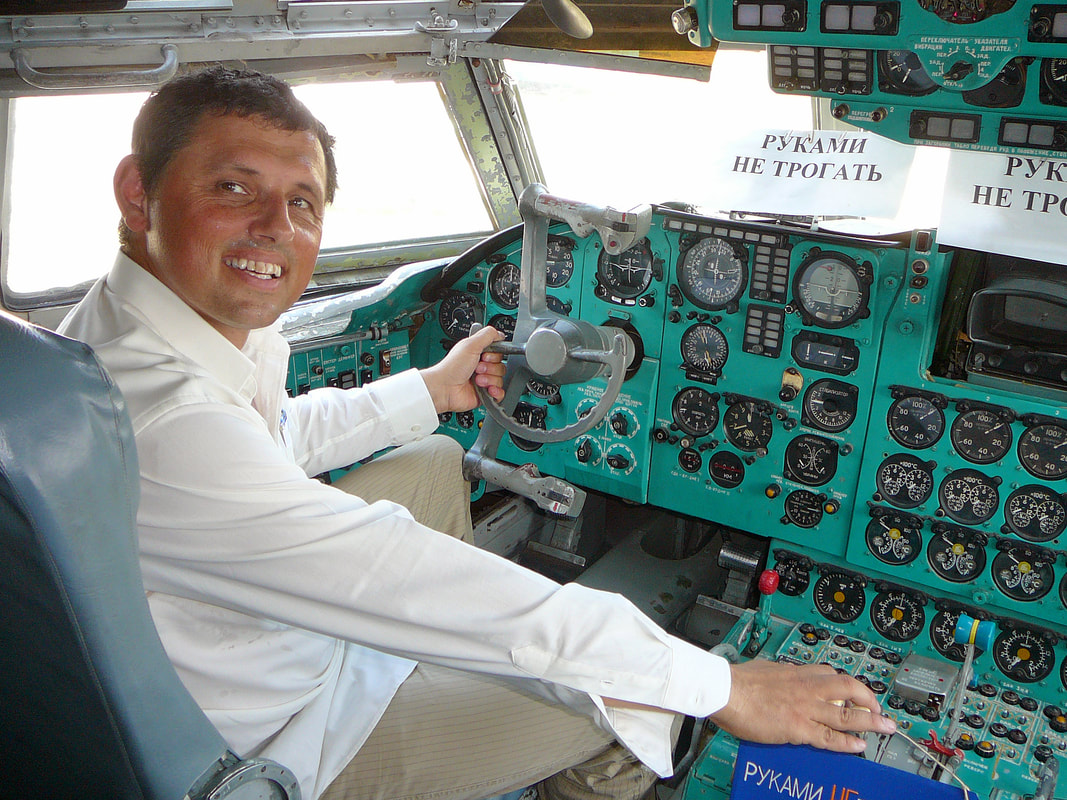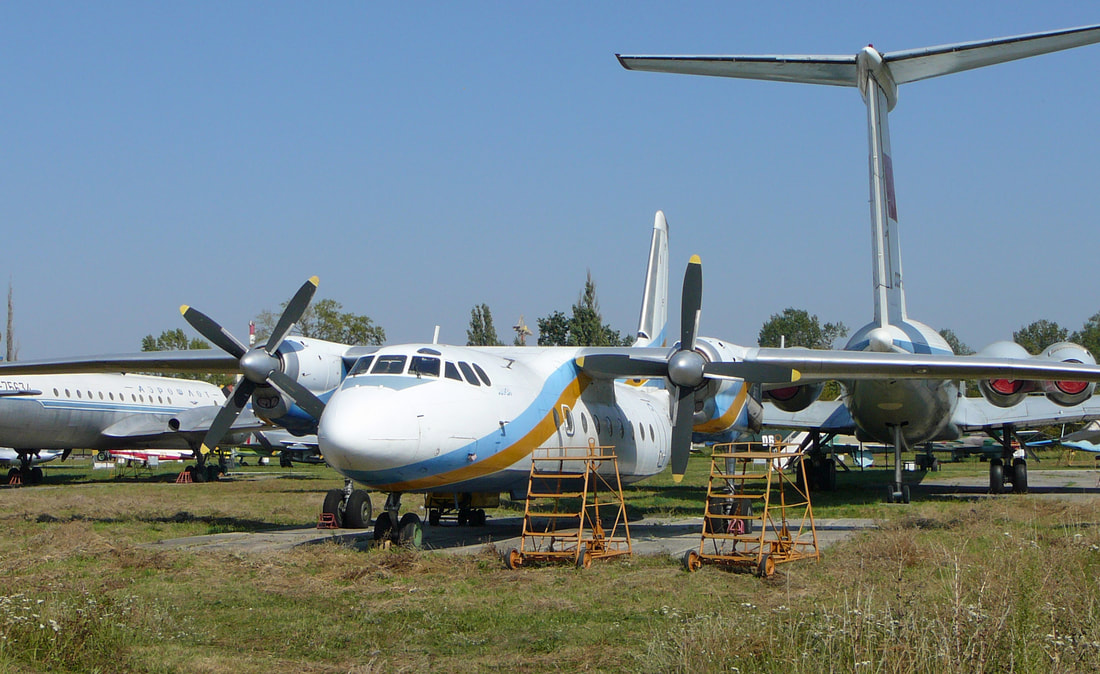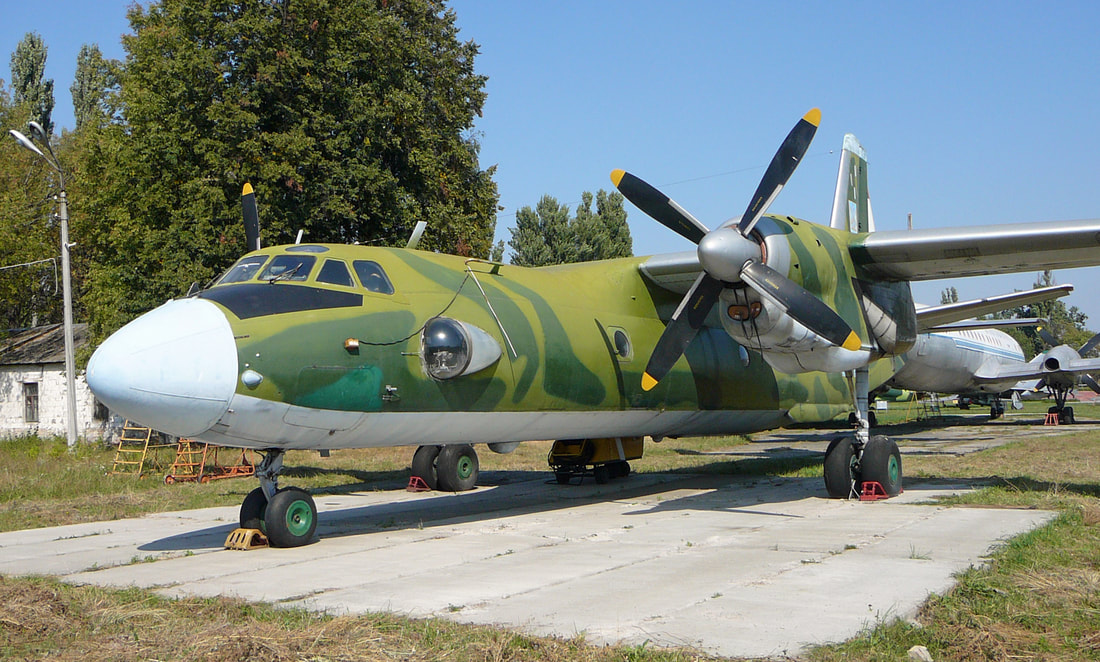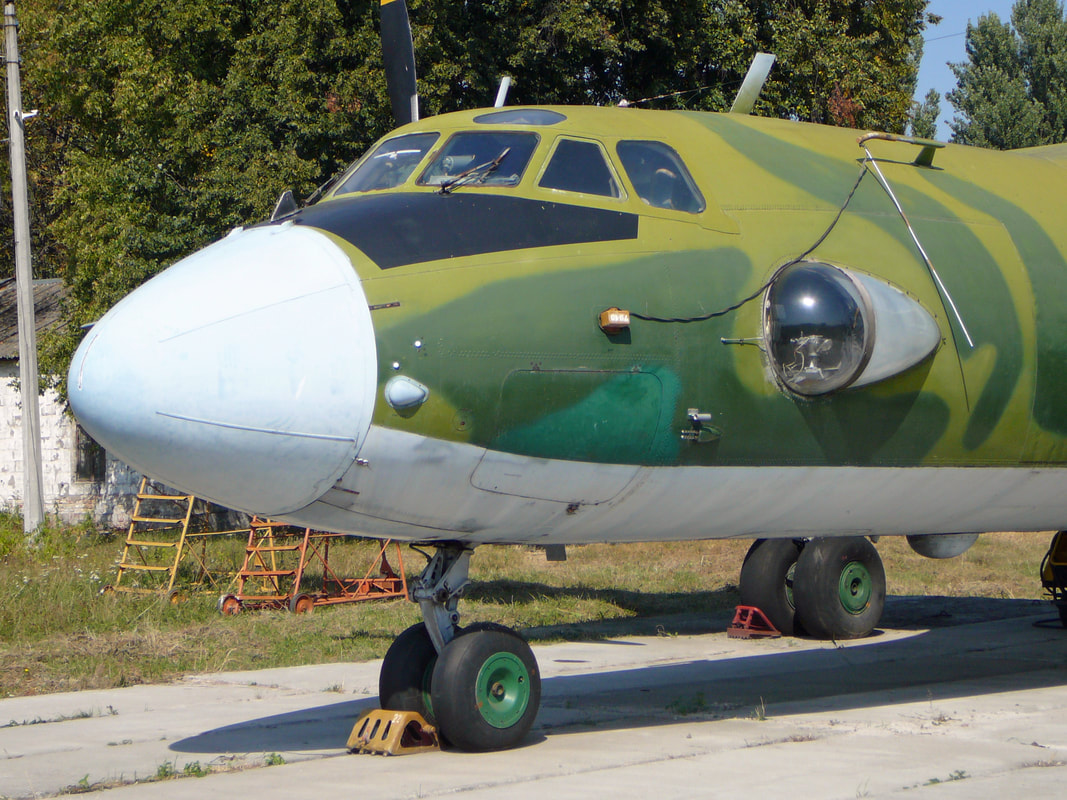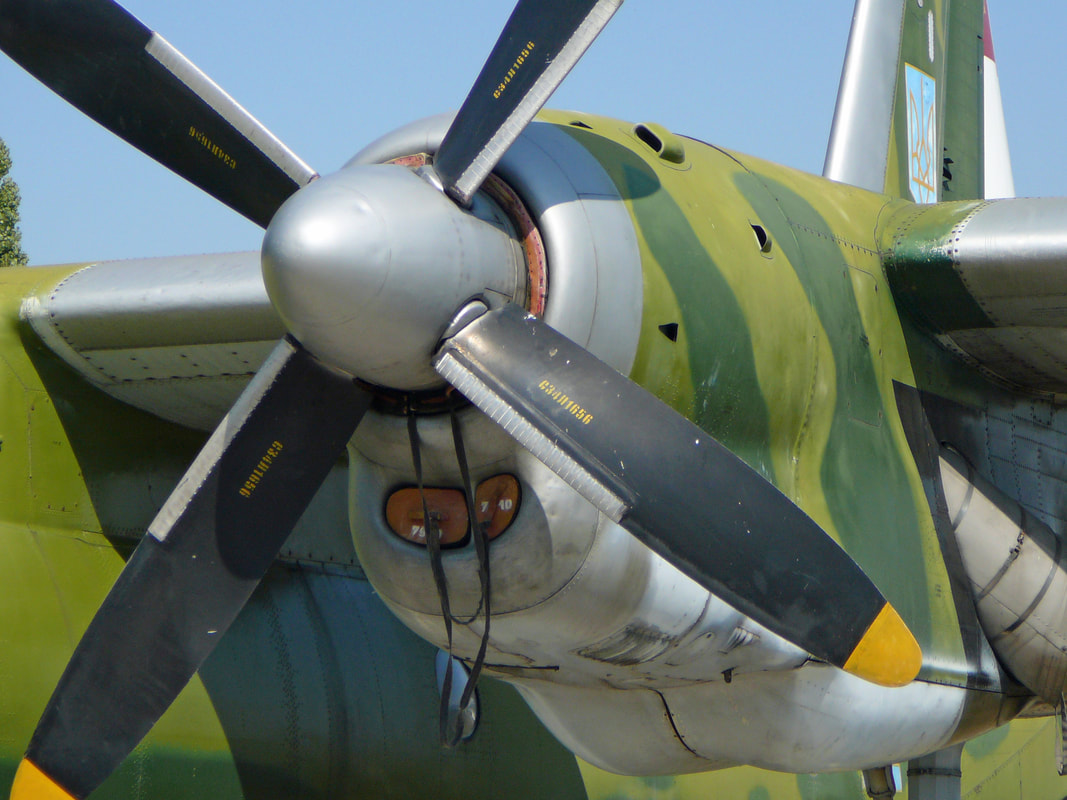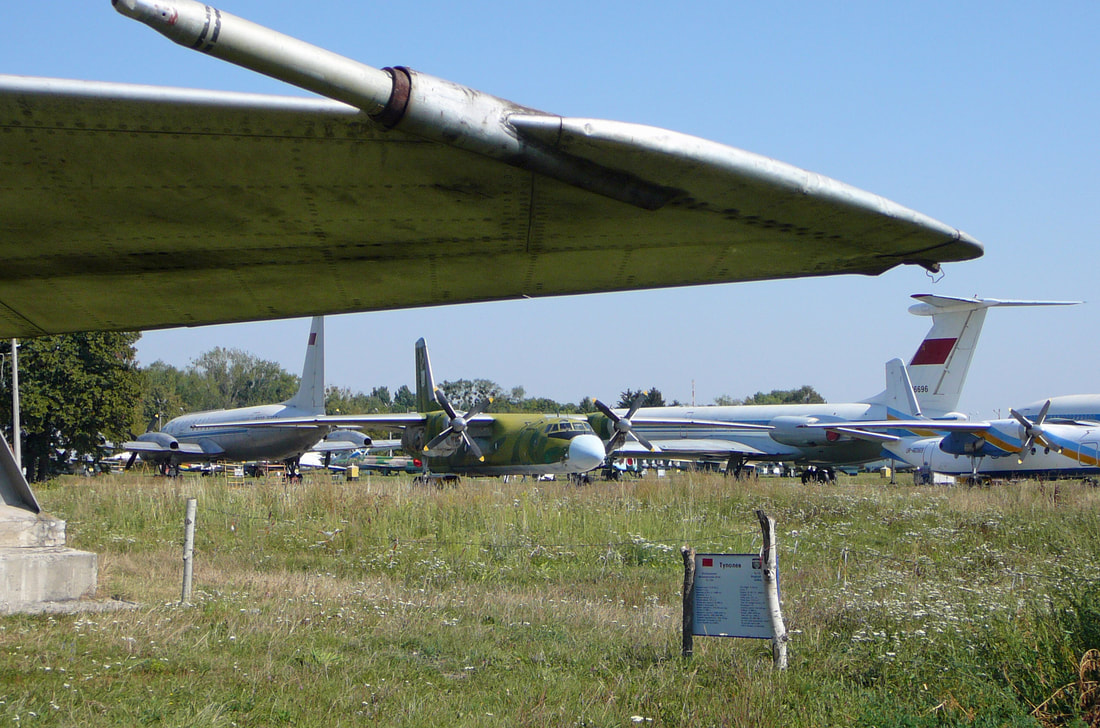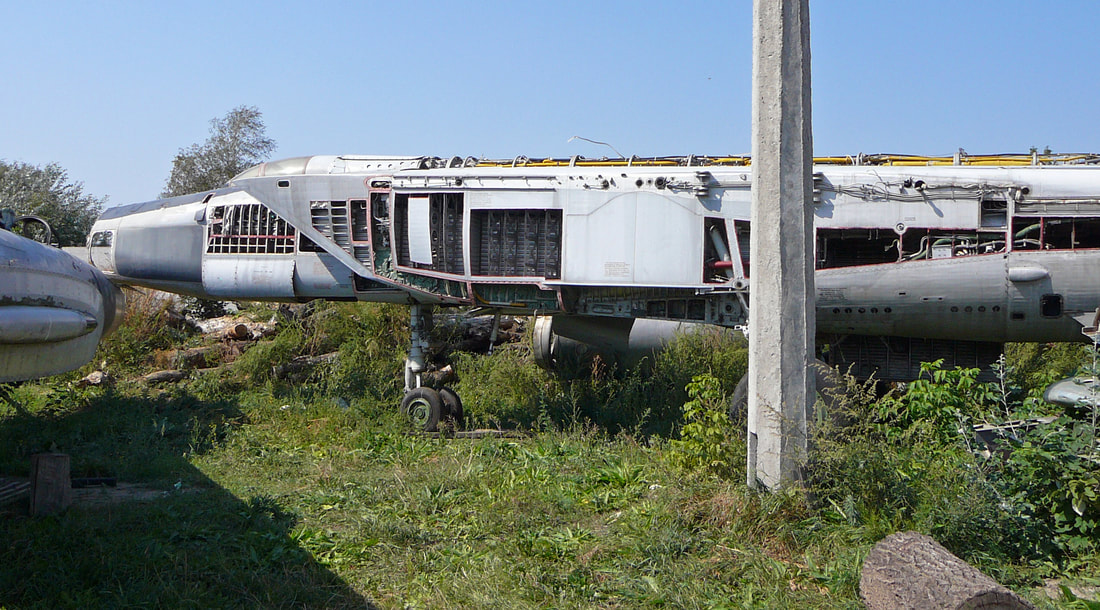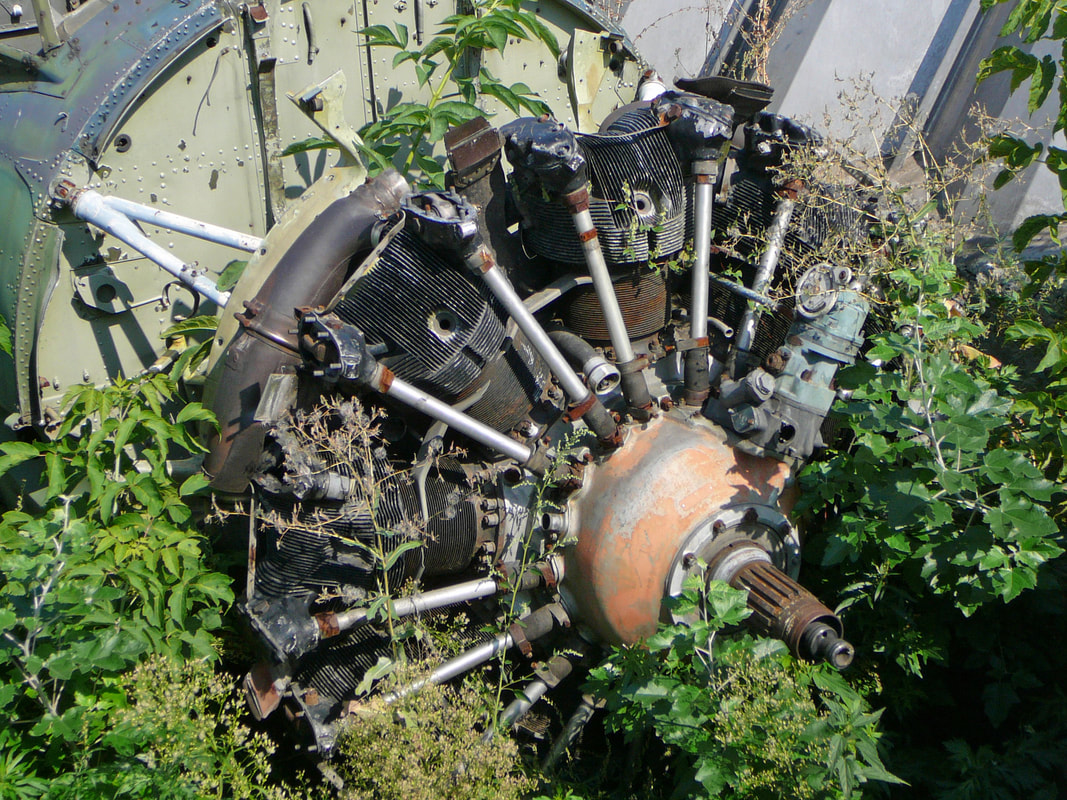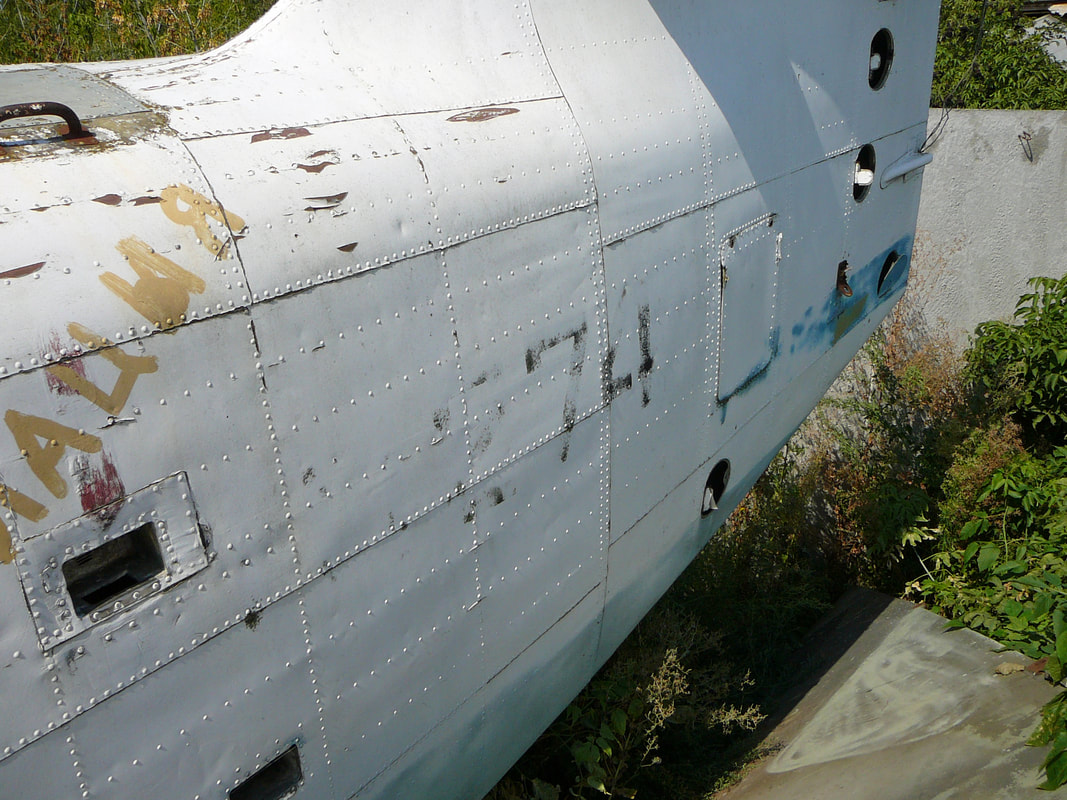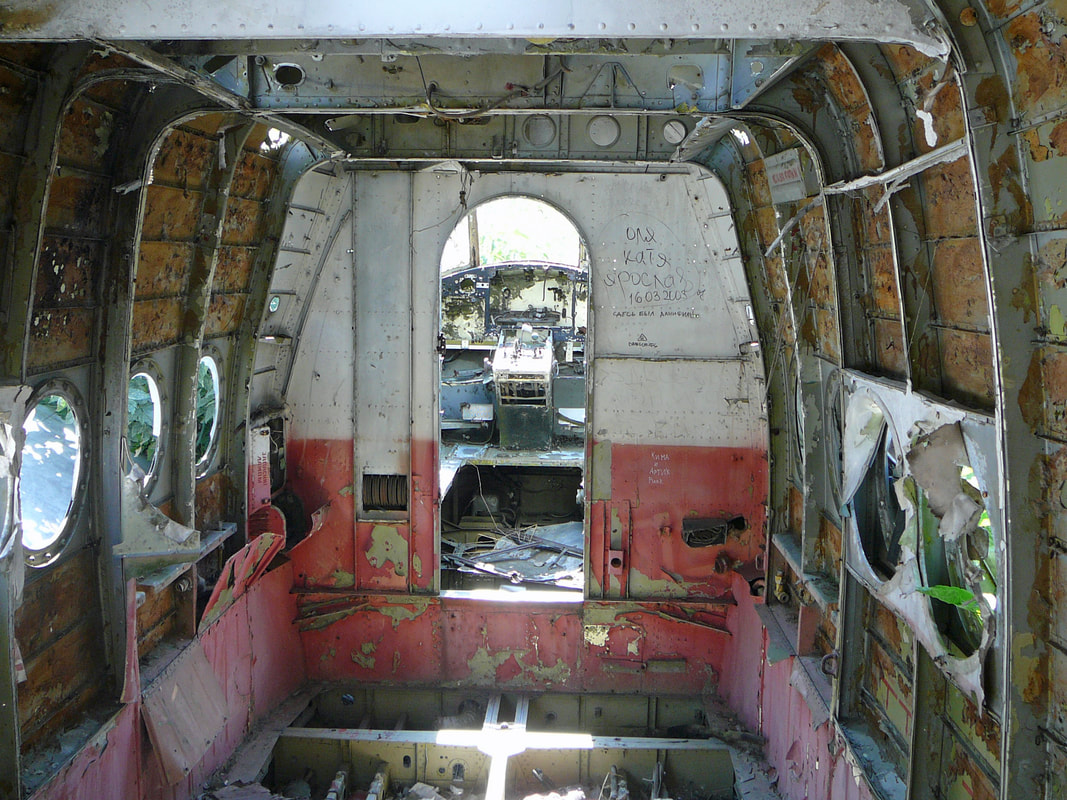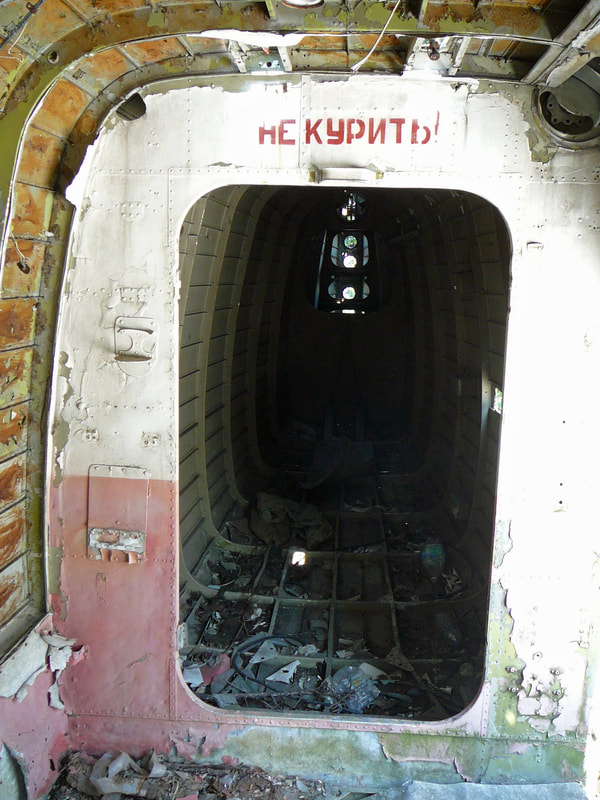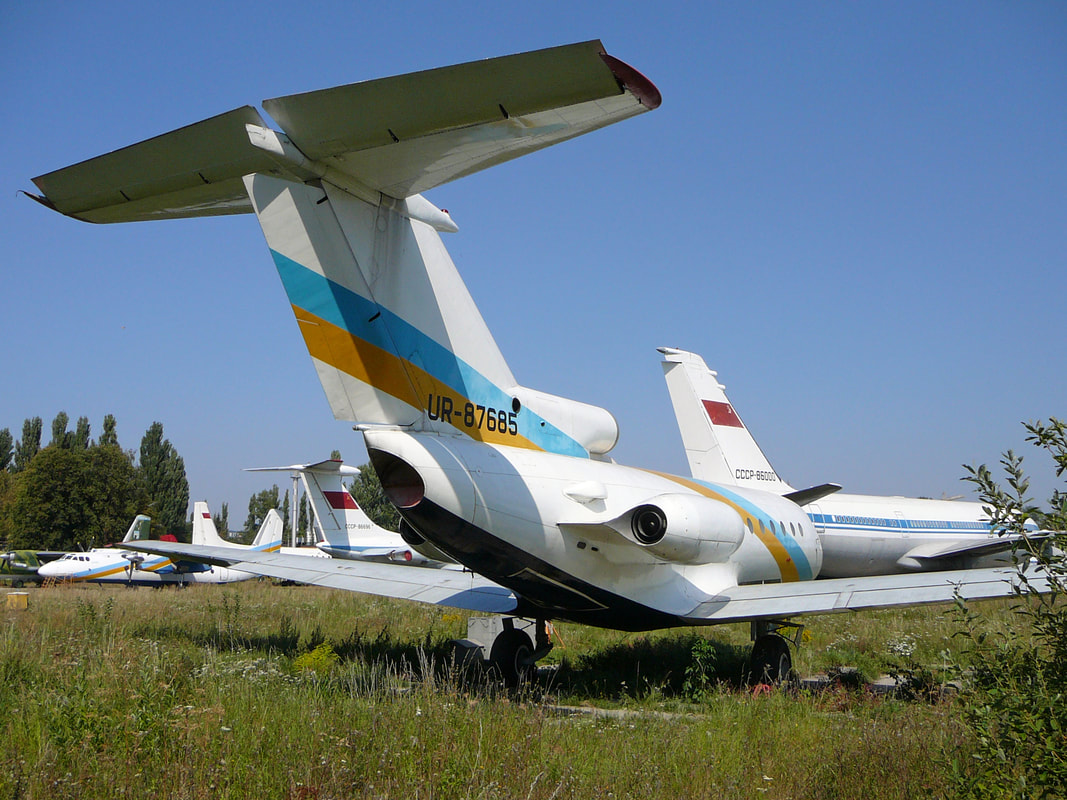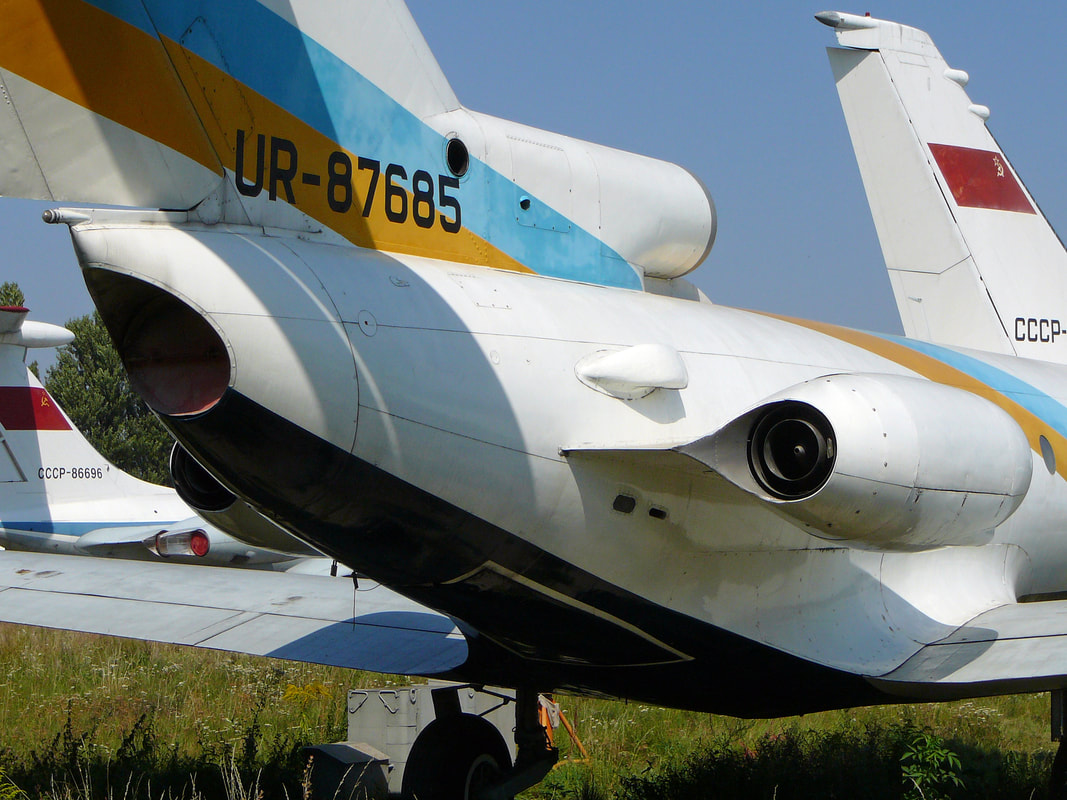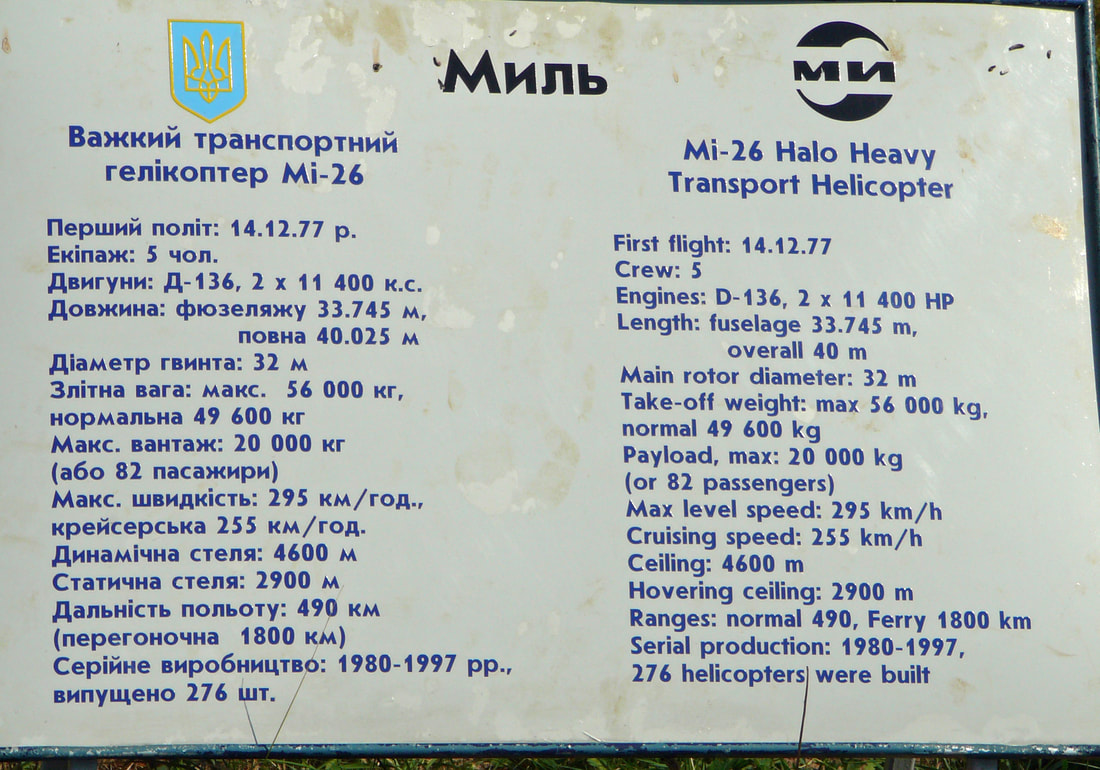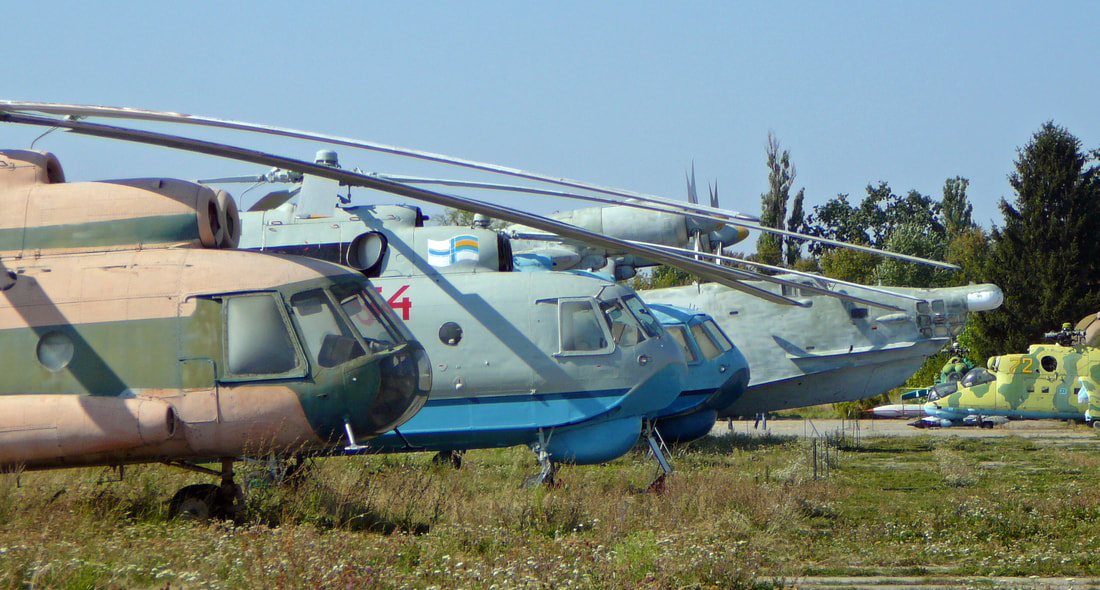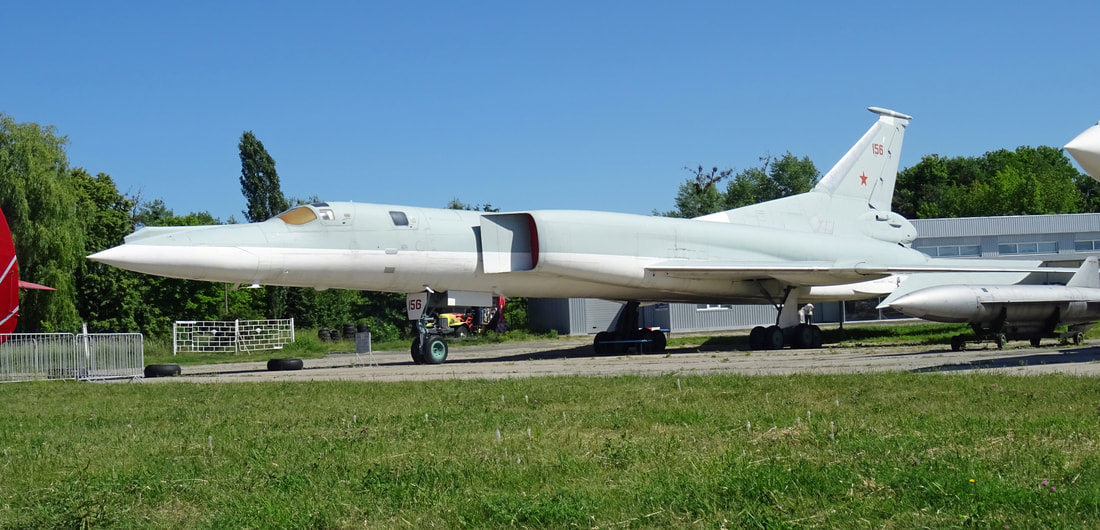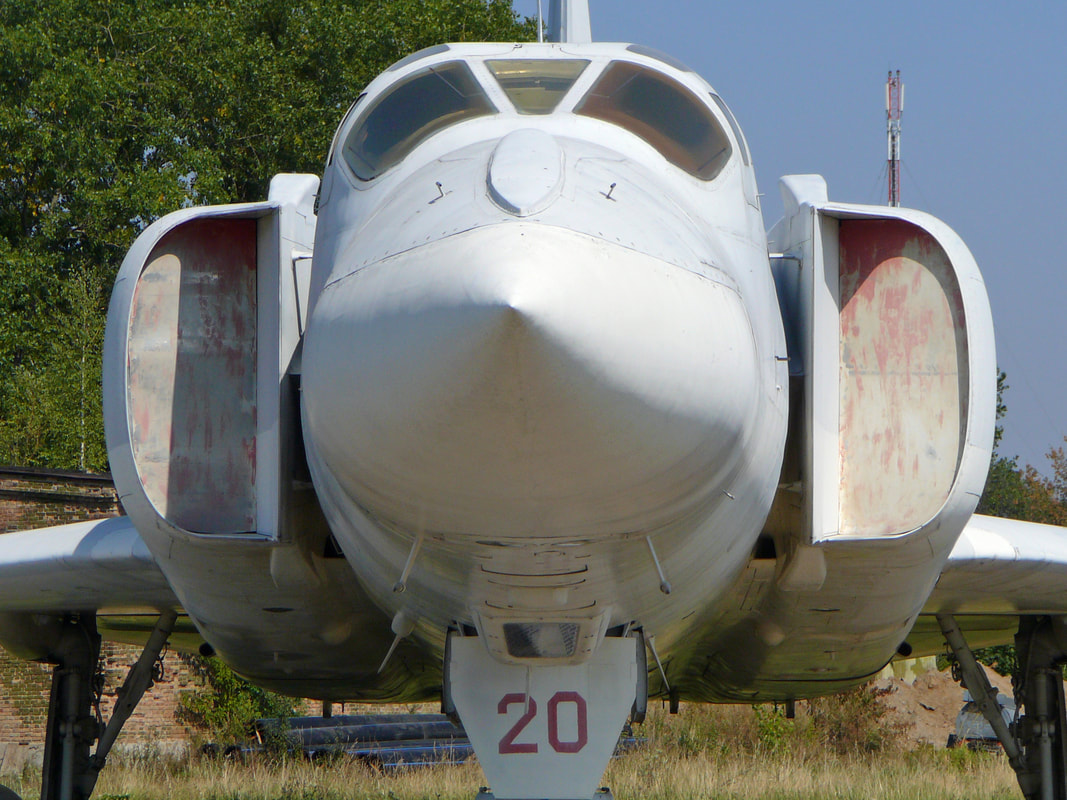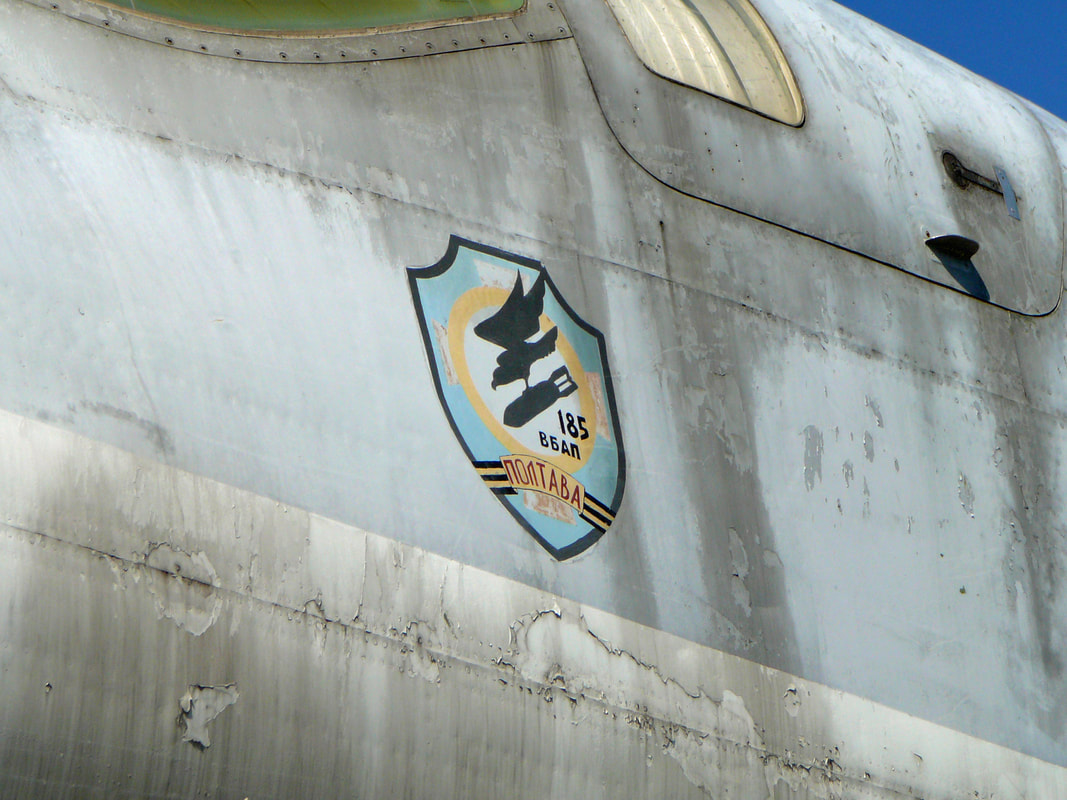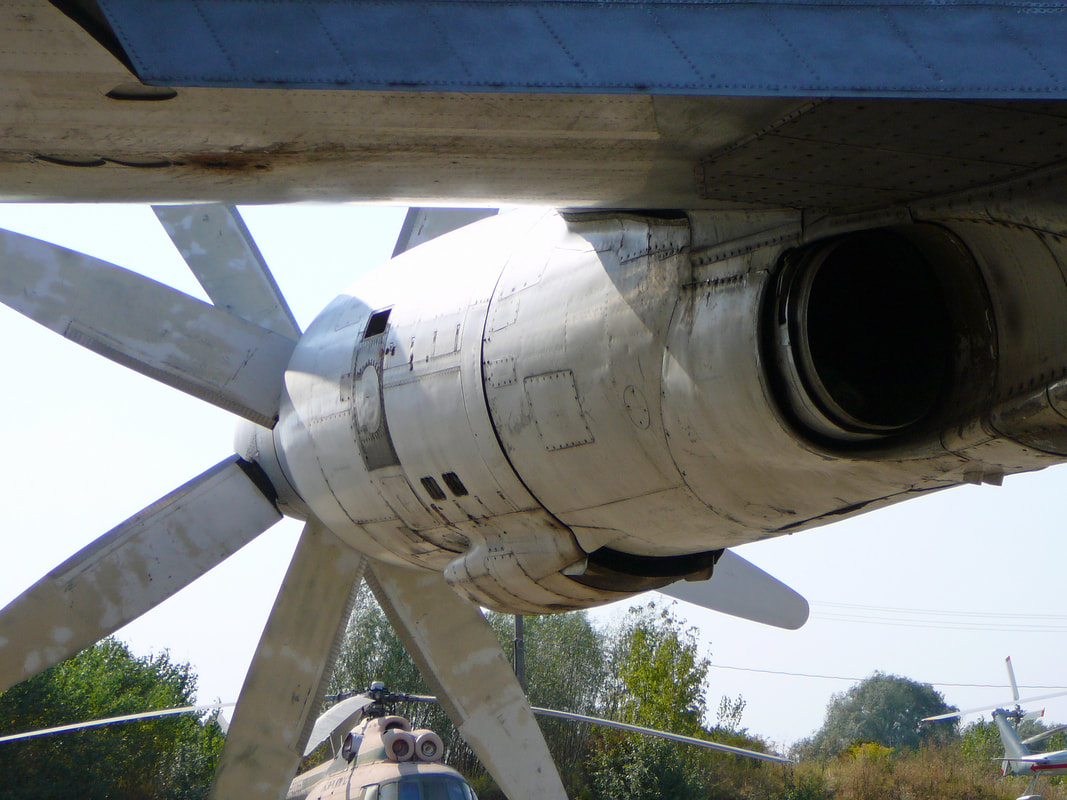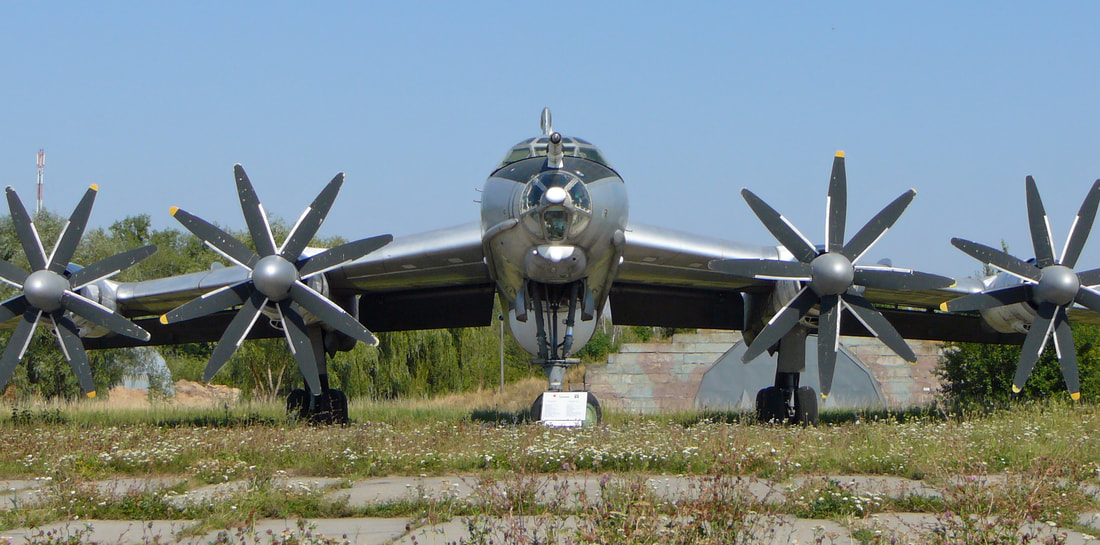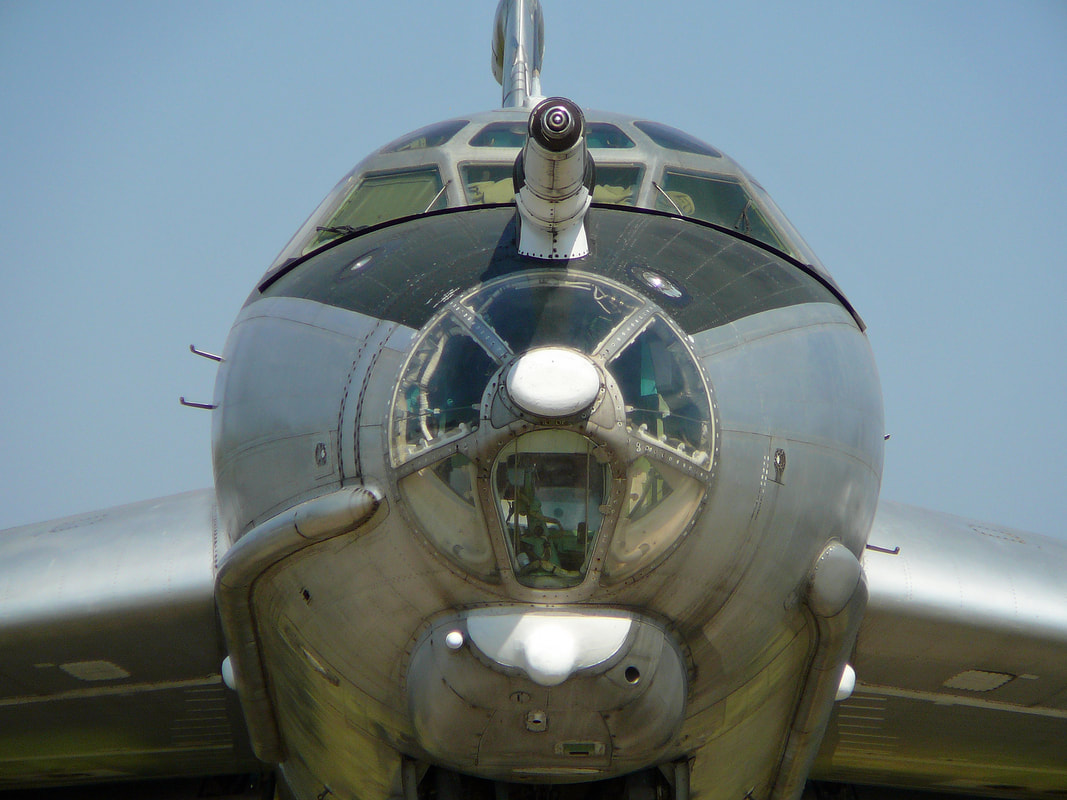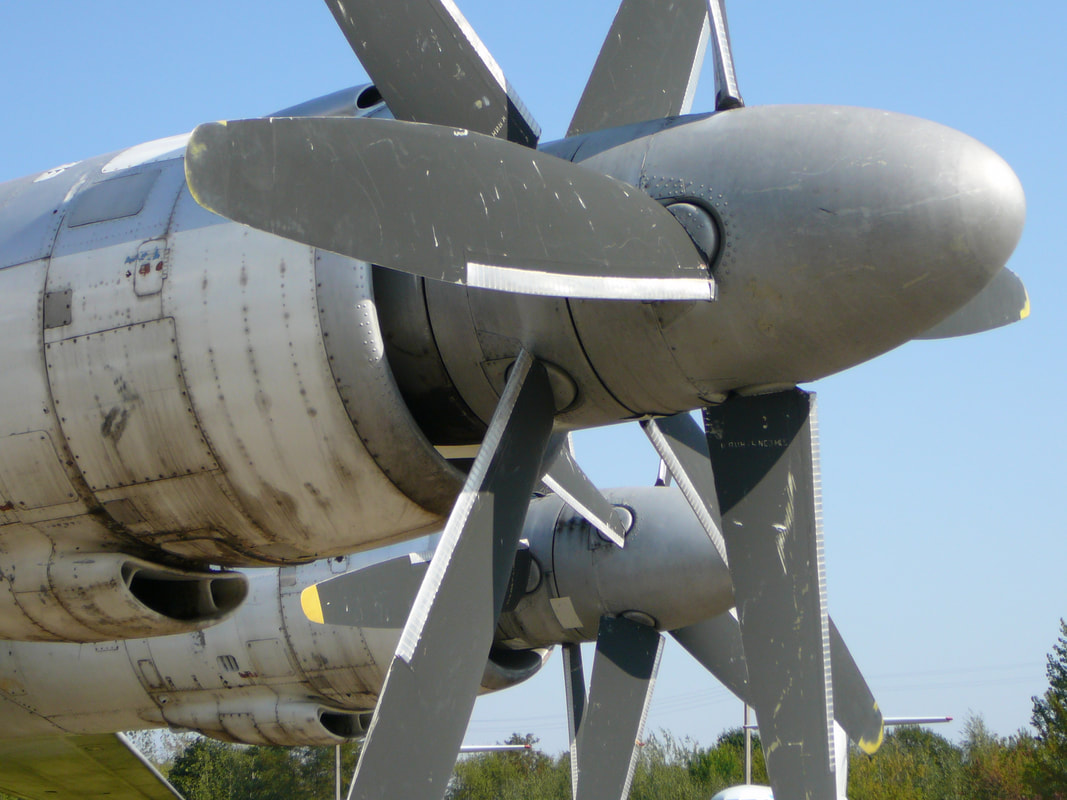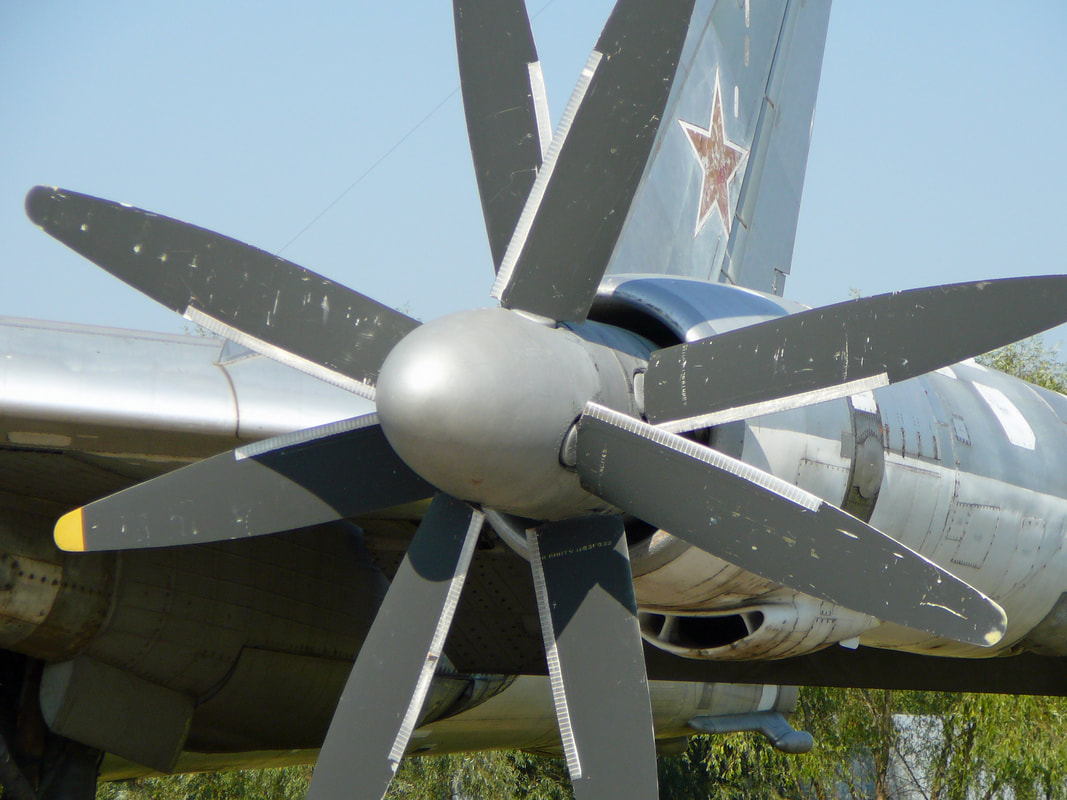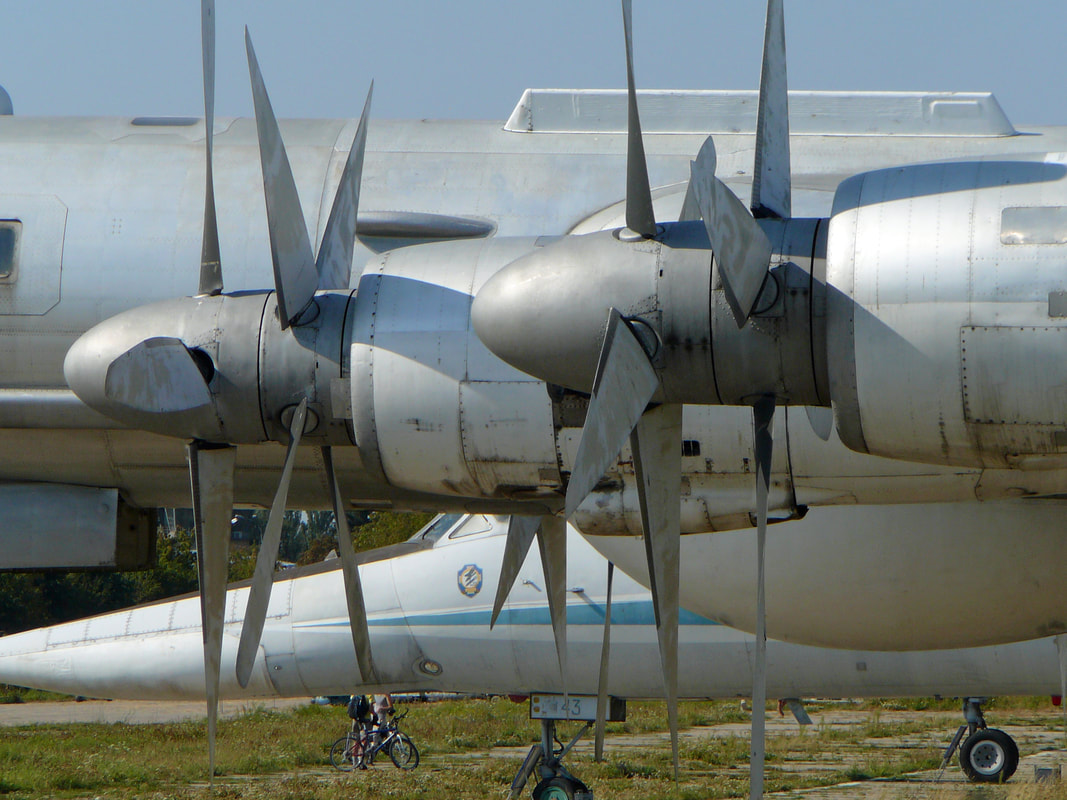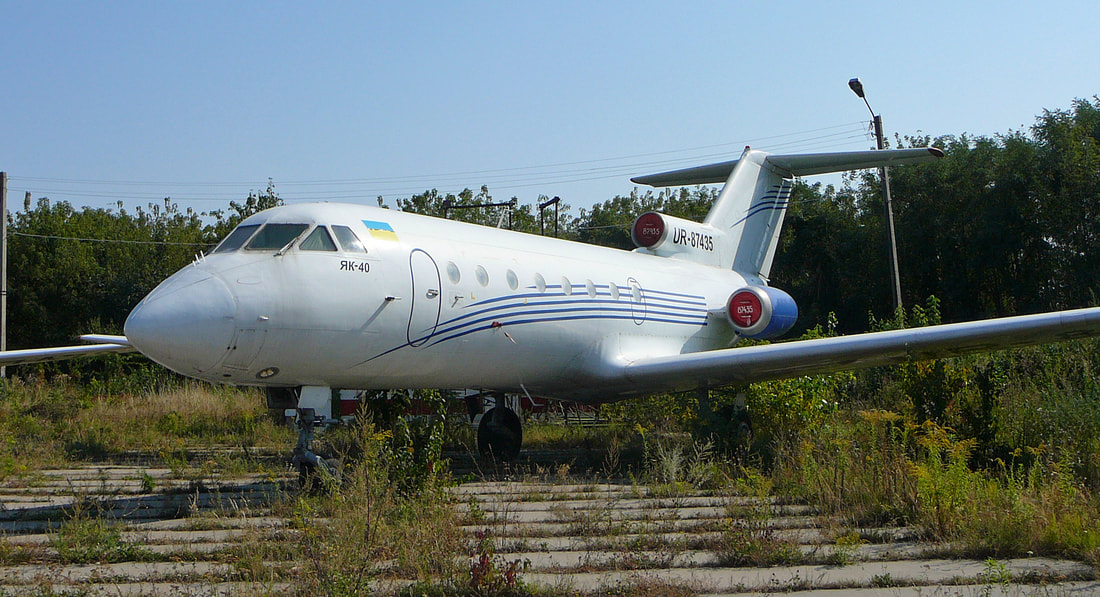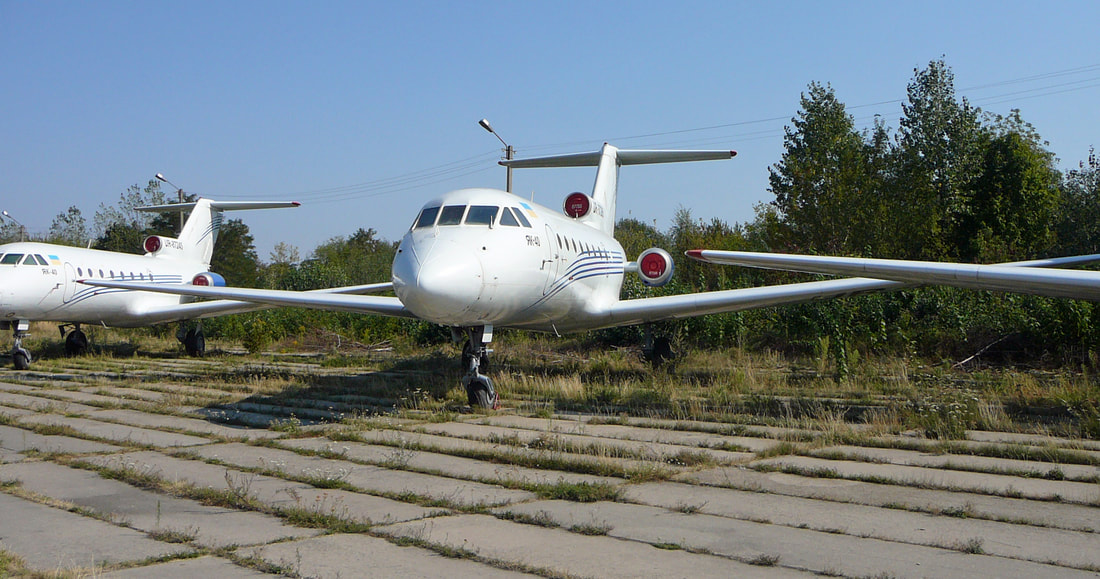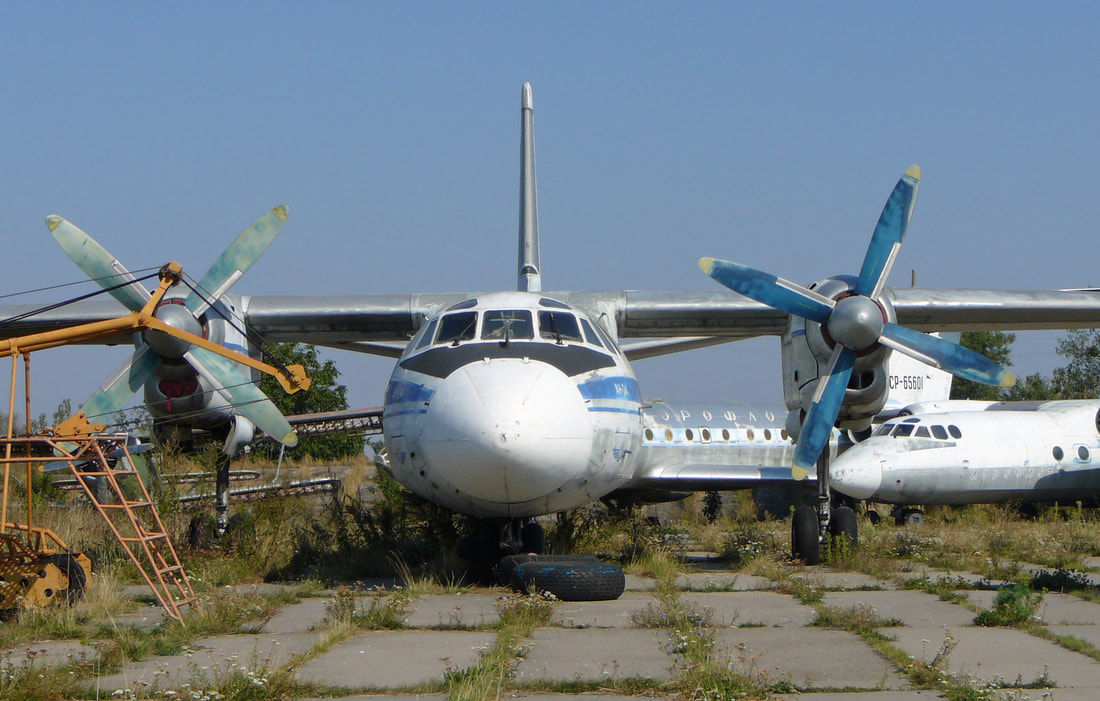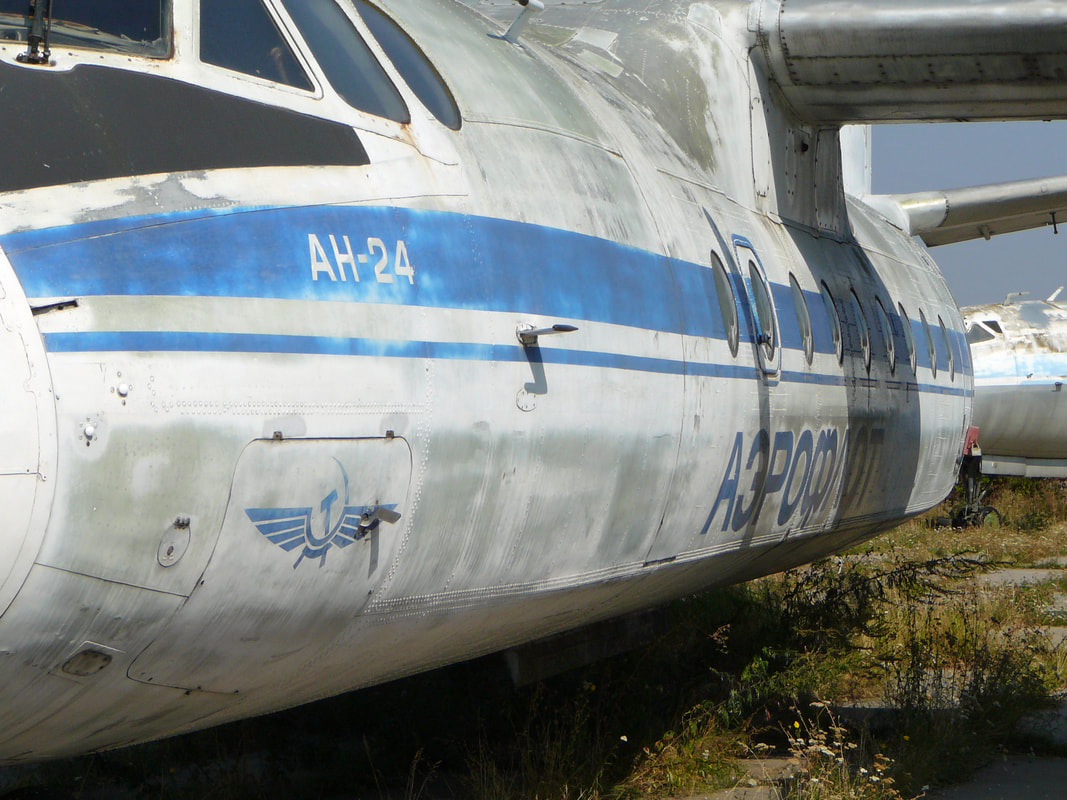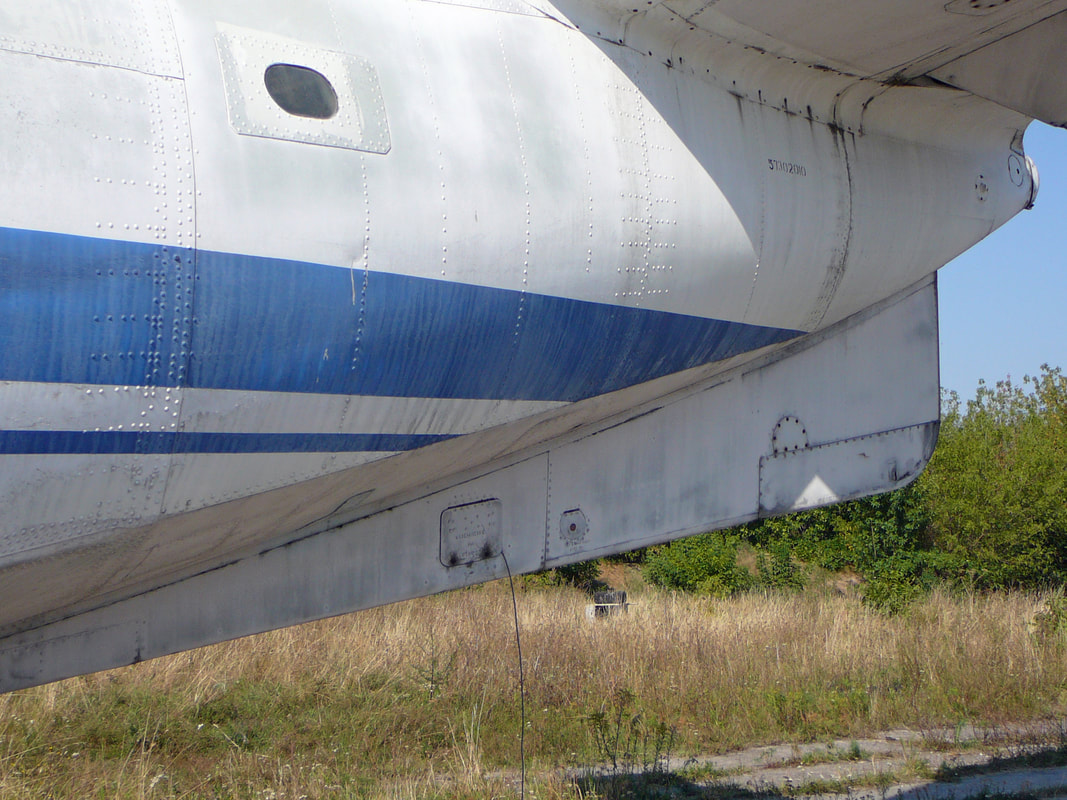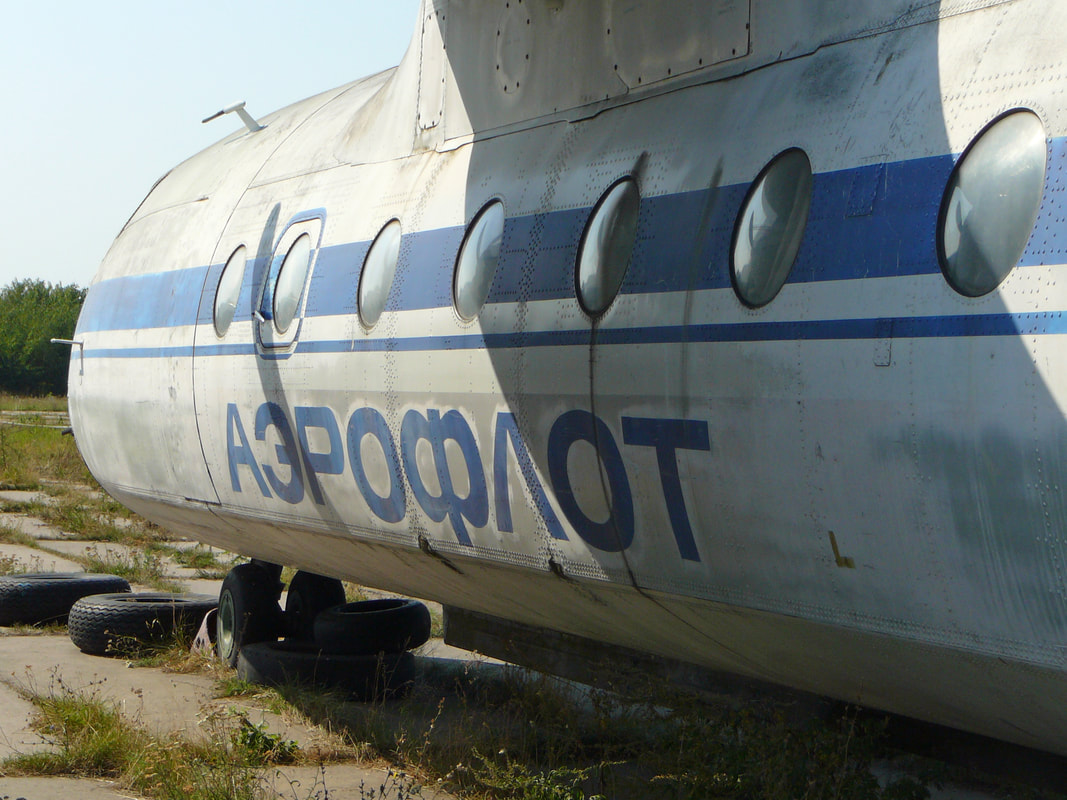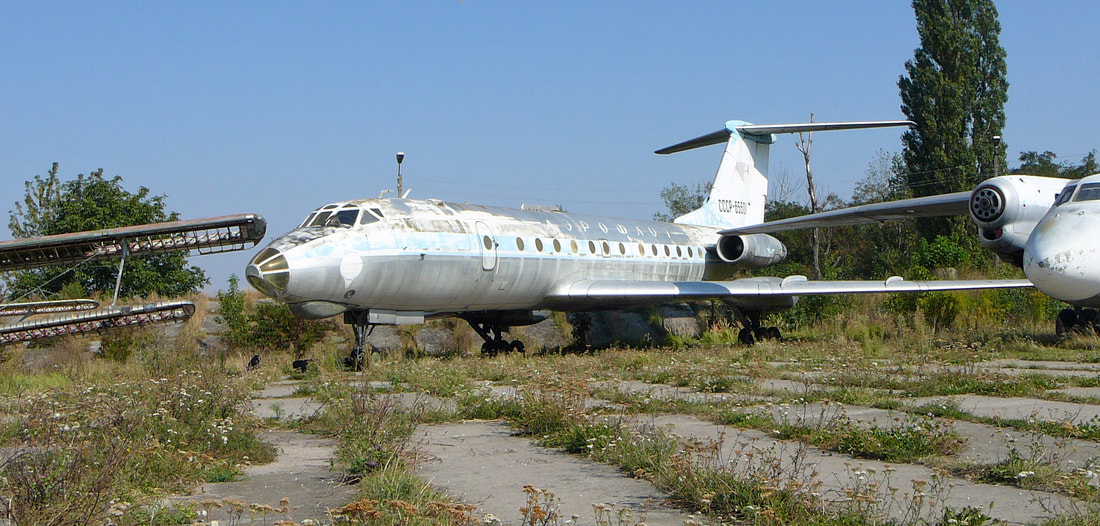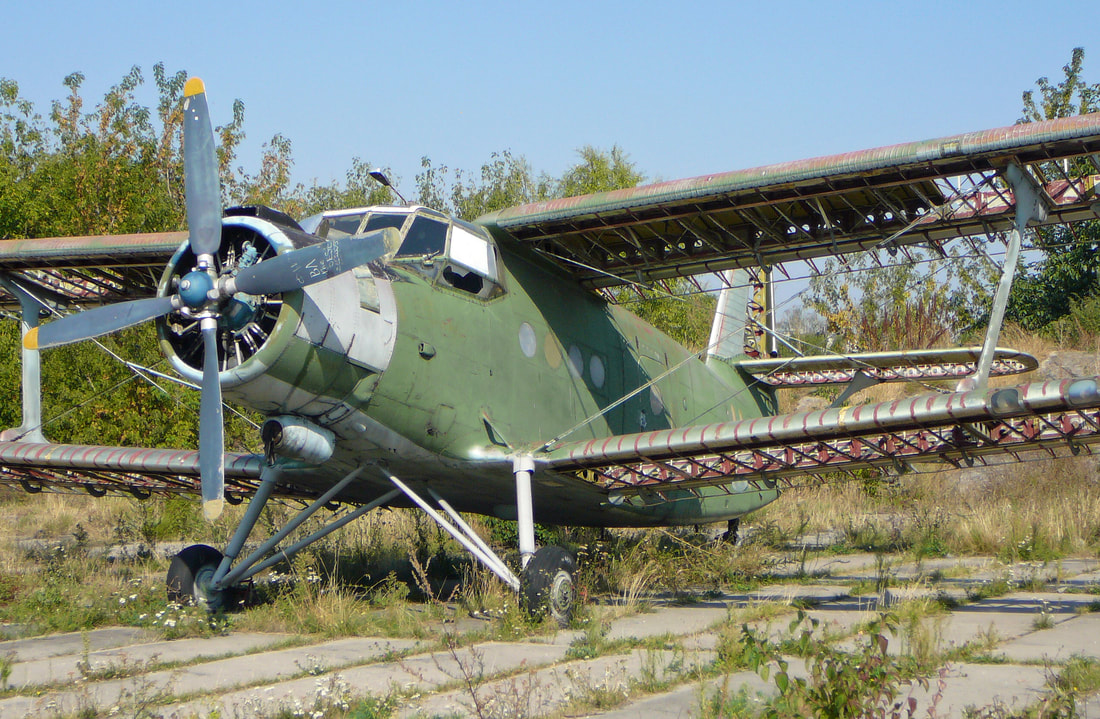Kiev Zhuliany State Aviation Museum 2008
by Jan Koppen
In September 2008, my friend and colleague Pieter Alderden and I visited the Ukraine. Next to some flights in vintage Russian transports, like; - AeroSvit/Lugansk Airlines An-24RV Kyiv-Borispol to Dnepropetrovsk, Motor Sich An-140 Zaporizhzhia to Borispol, and Donbassaero Yak-42D Borispol to Lviv, we visited the State Aviation Museum at Zhuliany Airport. Very sadly, Pieter passed away in June 2017.
The museum opened its doors to the public on 30 September 2003, with Yuriy Ziatdinov as curator. Both the premises and the planes are provided by the National Aviation University which continues to use some of the exhibits as educational props on site.
The Antonov An-2 is a Soviet mass-produced single-engine biplane utility/agricultural aircraft designed and manufactured by the Antonov Design Bureau beginning in 1946. Its remarkable durability, high lifting power, and ability to take off and land from poor runways have given it a long service life. The An-2 was produced up to 2001 and remains in service with military and civilian operators around the world.
UR-54812 is an Antonov An-2, which belonged to ARP 410 Airlines.
The An-2 is equipped with various design features which make it suitable for operation in remote areas with unsurfaced airstrips. It is fitted with a pneumatic brake system (similar to those used on heavy road vehicles) to stop on short runways, along with an airline attached to the compressor, so the pressure in the tires and shock absorbers can be adjusted without the need for installing specialized equipment. The batteries, while sizable, are relatively easy to remove, so the aircraft does not need a ground power unit to supply power for starting the engine. Likewise, there is no need for an external fuel pump to refuel the aircraft as it is provided with an inbuilt onboard pump, which allows the tanks to be filled from simple fuel drums.
Distinctive paddle blades absorb the 1000 hp from the Shvetsov ASh-62 engine. The ASh-62 was a development of the Wright R-1820 Cyclone that had been built in Russia under licence.
Preserved at the State Aviation Museum, Kiev Zhulyany. Airframe is in an engine running condition.
The extensiveness of the canopy glazing really did give the impression of being a greenhouse, providing excellent visibility in the forward hemisphere. The glazing panels were flat to prevent visual distortion, and the canopy was bulged out to the sides to permit a downward view, a feature referred to as the "balcony" and a handy thing for trying to land on short fields, or during crop-dusting.
All versions are powered by a 750 kW (1,010 hp) nine-cylinder Shvetsov ASh-62 radial engine, which was developed from the Wright R-1820. The An-2 typically consumes 2.5 l/min (0.66 US gal/min; 0.55 imp gal/min).
The Antonov An-2 is a mass-produced single-engine biplane that has been commonly used as a utility and agricultural aircraft. It is deliberately furnished with a minimum of complex systems.
The crucial wing leading edge slats that give the aircraft its slow flight ability are fully automatic, being held closed by the airflow over the wings. Once the airspeed drops below 64 km/h (40 mph), the slats will extend because they are on elastic rubber springs. Under typical conditions, the take-off is complete within 170 m (560 ft) while the landing run requires 215 m (705 ft); these figures will vary dependent upon various factors, such as the aircraft's take-off/landing weight, the external air temperature, surface roughness, and headwind.
The bright colors of ARP 410 Airlines An-2 caught by the camera on a sun-drenched day at Zhuliany.
Ten years later. Same aircraft, same registration, same airfield, other uniform. Zhuliany, June 2018.
This Tupolev Tu-104 is a longtime resident at Zhuliany State Museum.
Vintage paintscheme of Aeroflot with big Tupolev logo.
With original registration CCCP-L5415 and built in the 50's, Zhuliany State Museum's gate guardian is seen here with a great late afternoon light.
This is a very first production Tu-104 and was manufactured in Factory #135 in Kharkov. First flight was on May 11, 1956 and she was registered to Aeroflot Moscow directorate September 14, as CCCP-L5414. She was first noted August 3, 1956 in Copenhagen.
CCCP-75634 is a very early production model. Her first flight was on October 26 1957, with this, original, CCCP-75634 registration. She was registered on April 3, 1958 to the Soviet State Scientific Research Institute of Civil Aviation, Civil Air Fleet (GOS NII GVF). Keep in mind; - The IL-18A never flew for Aeroflot. She was cancelled from the civil aviation register on May 18, 1966. The aircraft was seen in this early Aeroflot livery between June 1993 and August 2002 in Kiev Institute of Civil Engineering. Donated and transferred to the Ukrainian State Museum of Aviation, where restored and seen first here in October, 2003.
Nose mounted air data probes festoon Aeroflot Ilyushin IL-18A 'Moskva'.
A classic early TurboProp Liner is this Aeroflot Iluyshin IL-18 CCCP-75634.
The long-nosed front fuselage of the Il-18 was unusual in having a pressure bulkhead immediately ahead of the cockpit and a long way from the tip of the nose.
CCCP-75634 is the first built production Il-18 called "Moskva".
CCCP-52036 is not an Ilyushin 14 but an Avia-14P.
This is an Avia-14P, the Czechoslovak licensed manufactured variant of the original Ilyushin type. Only 203 Avia-14s were built between 1956 and 1960 at Letnany. This one is delivered in late 1957 to the Soviet Union. Seen here in the very well kept, beautiful open air Zhuliany Museum with Aeroflot Polar Fleet livery.
CCCP-65743 is a Tupolev Tu-134A of Aeroflot.
This Tu-134A was registered on June 20, 1972, for Aeroflot Privolzhsk directorate. She was cancelled from civil register in 1984. Between 1992 and 2002 the 'Tup' was observed at Kiev Institute of Civil Engineering. Later she was donated to the State Aviation Museum.
Aeroflot airliners were ready to operate under wartime conditions at very short notice. Here, a Tu-134A sports an identification, friend or foe (IFF) transceiver antenna on the anti-glare shield above the glazed nose. The SRO-2/2M IFF, or ‘Odd Rods’ as it is code-named by NATO, is more often seen on fully fledged combat types like the Mikoyan MiG-29 and Sukhoi Su-27.
Tupolev Tu-134A CCCP-65743 on a broiling, hot Zhuliany tarmac in September 2008.
CCCP-65743 is powered by twin 15,000-lb thrust Soloview D-30’s, fitted with thrust reversers to shorten the landing run.
I can still remember the deafening sound and window vibrations of those early beasts and the kerosene odor after such an earthquake take off.
CCCP-85020 is a very old Tupolev Tu-154 (c/n. 71A-020) of Aeroflot. I guess she was manufactured in 1971.
The Tu-154 is powered by three rear-mounted low-bypass turbofan engines arranged similarly to those of the Boeing 727, but it is slightly larger than its American counterpart. Both the 727 and the Tu-154 use an S-duct for the middle (Number 2) engine. The original model was equipped with Kuznetsov NK-8-2 engines, which were replaced with Soloviev D-30KU-154 in the Tu-154M. All Tu-154 aircraft models have a relatively high thrust-to-weight-ratio which give excellent performance, at the expense of lower fuel efficiency. This became an important factor in later decades as fuel costs grew.
The Kuznetsov NK-8-2 engines are readily identifiable by the gray secondary air inlet doors in the nose cowl. These doors are fully open (sucked in at the rear) during takeoff to provide additional air.
UR-UCI is an Ilyushin IL-76MD.
Seen at the museum with Ukrainian Cargo Airways titles and UR-UCI registration to commemorate the real UR-UCI, which was tragically lost on landing Asmara, Eritrea, July 17, 1998.
This aircraft needs painting and additional preparation of the aircraft surfaces is required before painting. Generally consistent with aircraft having extensive corrosion on surfaces.
This IL-76MD was first seen on December 5, 1978 in Moscow-SVO, (originally as IL-76T). She was registered on March 16, 1979, for Aeroflot International directorate as CCCP-76511. Her registration was cancelled from the fleet register in 1980 and she was donated to the Kiev Institute of Civil Engineering as instructional airframe.
Close-up of the monster hinges fitted to UR-UCI.
Ten years later. Same aircraft, same registration, same airfield, other uniform. Zhuliany, June 2018.
CCCP-86000/348 (c/n. 101) is an Iluyshin IL-86.
Many airports had terminals too small for Aerobuses. In the West, the solution to this involved constructing greater airport capacity. By contrast, Soviet aviation research institutes addressed ways of increasing passenger throughput without the need for additional airport capacity. Many Soviet airports also had surfaces too weak for Aerobuses. The Soviet solution again favored adapting aircraft to existing conditions, rather than reconstructing airports. The Aerobus thus had to match the ground loadings of existing airliners. This called for complex multi-wheel landing gear.
The Soviet solution to the airport capacity issue involved passengers loading and unloading their own luggage into and from the aircraft. This was eventually called "the luggage at hand system". Taking suitcases into the cabin, as in trains, was studied, but necessitated a 3 meter fuselage extension with a 350-seat capacity. To avoid this, passengers were to deposit their luggage in underfloor compartments as they entered the airliner.
The Soviet solution to the airport capacity issue involved passengers loading and unloading their own luggage into and from the aircraft. This was eventually called "the luggage at hand system". Taking suitcases into the cabin, as in trains, was studied, but necessitated a 3 meter fuselage extension with a 350-seat capacity. To avoid this, passengers were to deposit their luggage in underfloor compartments as they entered the airliner.
First prototype! - First flight December 22, 1976 from Moscow - Khodynka. First public appearance Paris, Le Bourget Airshow, June 15 1979. To Kiev Institute of Civil Engineering and after 2002 donated to the Kiev state Museum of Aviation.
Aeroflot IL-86 CCCP-86000 seen here on a sweltering Zhuliany tarmac on September 01, 2008.
The main problem facing the Il-86 was the lack of a suitable engine. The Kuznetsov NK-8 series engine, adopted on March 26, 1975, had only a bypass ratio of 1.15 to 1 and drag-inducing grilles over its cascade thrust reversers. This engine had high specific fuel consumption and was noisy.
CCCP-86696 is an Ilyushin 62 of Aeroflot.
Registered October 27, 1972 to Aeroflot Kazakhstan directorate. On April 3, 1974 she had an incident at Moscow-Domodedovo. In 1985 she was cancelled from the state registry. First noted here in Zhuliany Museum on October 6, 2003.
A classic cockpit view of the IL-62.
The late Pieter Alderden behind the wheels of this beautiful IL-62.
The IL-62 has a most definitely remarkable, as unique steering wheel.
No ground steering wheel at the co-pilot side.
The IL-62 F/E panel in full glory.
Your author seen working the wheels. With a midday temperature of 40 degrees centigrade it was a bit sticky in the cockpit of Ilyushin IL-62 CCCP-86696.
Early NK-8-4-engined Il-62's suffered from performance problems including fatigue and overheating issues with the engines, sometimes leading to false fire alarms which could possibly cause the crew to accidentally shut down paired engines to prevent contiguous engine and fuselage damage.
Powered by four tail-mounted Kuznetsov NK-8-4 turbofans, the aircraft can carry up to 186 passengers over ranges of up to 4160 miles with full fuel load.
|
The hammer and sickle is a symbol meant to represent proletarian solidarity – a union between the peasantry and working-class. It was first adapted during the Russian Revolution, the hammer represented the workers and the sickle represented the peasants.
After World War I (from which Russia withdrew in the year 1917) and the Russian Civil War, the hammer and sickle became more widely used as a symbol for labor within the Soviet Union and for international proletarian unity. It was taken up by many communist movements around the world, some with local variations. Today, even after the dissolution of the Soviet Union, the hammer and sickle remains commonplace in Russia and other former union republics, but its display is prohibited in some other former communist countries as well as in countries where communism is banned by law. The hammer and sickle also remains commonplace in countries like Vietnam, Cuba and China which are still officially communist. |
|
Like the VC-10, the IL-62’s T-tail and rear mounted engines gave it some tight aft center of gravity limits, particularly when on the ground. As a result, the designers fitted the aircraft with a hydraulic twin-wheel strut to support the rear fuselage during loading and unloading.
Another aircraft with rear mounted engine, the Sud-Aviation SE-210 Caravelle, had something similar to this. |
Russian hardware on a sweltering Zhuliany's tarmac in September 2008.
UR-46801 is an Antonov An-24B of the defunct ARP 410 Airlines.
ARP 410 Airlines (Aviatsiya zagalnovo priznachennya); ARP-410 is the State Enterprise Plant 410 at Zhuliany airport and performes in depth maintenance and overhaul of the An-24, An-26, An-30 and An-32. The Airline division ceased operations by 2007.
UR-46801 provided yeoman service for ARP 410 Airlines and still is wearing their uniform.
|
Due to its rugged airframe and good performance, the An-24 was adapted to perform many secondary missions such as ice reconnaissance and engine/propeller test-bed, as well as further development to produce the An-26 tactical transport, An-30 photo-mapping/survey aircraft and An-32 tactical transport with more powerful engines. Various projects were envisaged such as a four jet short/medium haul airliner and various iterations of powerplant.
|
22/Blue is an Antonov An-26 of the Ukraine Air Force (c/n. 7910)
|
Ivchenko AI-24 turboprop aircraft engine was designed and developed in the late-1950s by the Ivchenko design bureau and manufactured thereafter by Motor Sich. It was designed to power Antonov's successful An-24, An-26 and An-30 aircraft series.
|
Looks like a museum ramp!. Crystal clear image on a gorgeous day in September 2008.
The hulk of Suhkoi Su-7BMK Fitter-A at Zhuliany in 2008.
Engineless and in bare metal, this forlorn Suhkoi Su-7BMK Fitter-A awaits the cutter’s torch at Zhuliany in Junu 2008.
MiG-25RBS of the National Military Academy.
Geriatric jet hulks are an increasingly familiar sight around the former eastern bloc.
Normally this was home of a Tumansky R-15 axial flow, single shaft turbojet with an afterburner. Within the fan inlet case of the Tumansky R-15, there are anti—icing air bosses and probes to sense the inlet pressure and temperature. Similar units exist throughout the engine to check temperatures and pressures.
Dumped alongside a MiG-21 Fishbed in the Aeronautical Compound of Kiev-Zhuliany State Aviation State Museum is this An-2 airframe, without any marks or registration, wearing very faded Ukrianina Air Force uniform.
The Shvetsov ASh-62R engine was a nine-cylinder single-row air-cooled radial, which some sources claim was based on the US Wright Cyclone engine. There was a carburetor intake on top of the engine cowling, an oil cooler below the cowling, and an exhaust on the right side.
The greenhouse style canopy.
Looks like a MiG-21 to me!
Antonov An-2 CCCP-??274 once flew for Aeroflot.
The fuselage was all metal; the flight surfaces had aluminum framework, with the two-spar wing skinned with aluminum back to the front spar and covered with fabric.
Who knows the identity of this ship?
|
|
|
Completely worn out!
The cockpit featured dual yoke-type controls, and the extensiveness of the canopy glazing really did give the impression of being a greenhouse, providing excellent visibility in the forward hemisphere.
Yakolev Yak-40 UR-87685 sitting pretty in high grass.
Yakovlev Yak.40 registration UR-87685, is presently preserved at the State Polytechnic Museum in Kiev, Ukraine.
UN cargo helicopter at Zhuliany State Aviation Museum on June 01, 2018 in Kyiv, Ukraine. Zhuliany State Aviation Museum is the largest aviation museum in Ukraine.
64/Black is an United Nations Mil Mi-26.
35/Yellow is an Russian Navy Beriev Be-12 Chaika.
The Beriev Be-12 Chayka is a Soviet turboprop-powered amphibious aircraft designed for anti-submarine and maritime patrol duties.
156/Red is an Ukrainian Air Force Tupolev Tu-22M-0 Backfire. The Tu-22M-0 was the earliest pre-production variant. Only 9 were produced.
Ten years later. Same aircraft, same registration, same airfield, other emblem. Zhuliany, June 2018.
Serial '20' is a Tupolev Tu-22M-2 "Backfire-B" Strategic bomber and on display at The Ukraine State Aviation Museum in Kiev, September 2008.
|
The first major production version, entering production in 1972, was the Tu-22M2 Backfire-B, with longer wings and an extensively redesigned, area ruled fuselage (raising the crew complement to four), twin NK-22 engines (215 kN thrust each) with F-4 Phantom II-style intake ramps, and new undercarriage with the main landing gear in the wing glove rather than in large pods. 211 Tu-22M2 were built from 1972 into 1983. The Tu-22M2 had a top speed of Mach 1.65 and was armed most commonly with long-range cruise missiles/anti-ship missiles.
|
Note; - OBP-15T Targeting bombsight locateed just before her '20' marked nosedoor.
Ten years later. Same aircraft, same uniform, same airfield, other serial (07 iso 20). Zhuliany, June 2018.
96/Blue is an Ukraine Air Force Tupolev Tu-22M-3 'Backfire'.
|
The later Tu-22M3 Backfire-C, which first flew in 1977, introduced into operation in 1983 and officially entered service in 1989, had new NK-25 engines with substantially more power, wedge-shaped intake ramps similar to the MiG-25, wings with greater maximum sweep and a recontoured nose housing a new Almaz PNA navigation/attack radar and NK-45 nav/attack system, which provides much-improved low-altitude flight. The aerodynamic changes increased its top speed to Mach 2.05 and its range by one third compared to the Tu-22M-2. It has a revised tail turret with a single cannon. It was nicknamed Troika ('Trio' or third) in Russian service. 268 were built until 1993.
As built, the Tu-22M included the provision for a retractable probe in the upper part of the nose for aerial refueling. The probe was reportedly removed as a result of the SALT negotiations, because with refueling it was considered an intercontinental range strategic bomber. The probe can be reinstated if needed. |
A great looking brute, a Tupolev Tu-22M-3.
Ten years later. Same aircraft, same uniform, same airfield, other serial (57 iso 96). Zhuliany, June 2018.
96/Blue, 20/Red and 156/Red are all Ukraine Air Force Tupolev Tu-22M Backfire's.
The Tu-134UBL is a Tu-160 crew training version, with Tu-160 nose cone.
Note; - The Anti-Glare Panel is expanding all over its 'pinokkio nose'.
The belly of this Tupolev Tu-142M 'Bear' turboprop-engined transport form a fitting frame for her more modern Tu-22M successor.
Tupolev Tu-142MZ 85/Black is a Soviet maritime reconnaissance and anti-submarine warfare aircraft on display at the Ukraine State Aviation Museum and was produced in Taganrog.
The Tupolev Tu-142; NATO reporting name: Bear F/J is a Soviet/Russian maritime reconnaissance and anti-submarine warfare (ASW) aircraft derived from the Tu-95 turboprop strategic bomber. A specialized communications variant designated Tu-142MR was tasked with long-range communications duties with Soviet ballistic missile submarines. The Tu-142 was designed by the Tupolev design bureau, and manufactured by the Kuibyshev Aviation and Taganrog Machinery Plants from 1968 to 1994. Formerly operated by the Soviet Navy and Ukrainian Air Force, the Tu-142 currently serves with the Russian Navy.
During early operations, the Tu-142 revealed several shortcomings. The aircraft's rough-field capability was found to be of limited use, so the 12-wheel bogies used on the first 12 of 36 aircraft were replaced with four-wheel reinforced bogies from the Tu-114 airliner; consequently, the wheel-wells in the engine nacelle were made slimmer.
Getting some shade below the Tu-142MZ's huge wings.
Developed in response to the American Polaris programme, the Tu-142 grew out of the need for a viable Soviet ASW platform. It succeeded the stillborn Tu-95PLO project, Tupolev's first attempt at modifying the Tu-95 for maritime use. The Tu-142 differed from the Tu-95 in having a stretched fuselage to accommodate specialized equipment for its ASW and surveillance roles, a reinforced undercarriage to support rough-field capability, improved avionics and weapons, and enhancements to general performance. The Tu-142's capability was incrementally improved while the type was in service, eventually resulting in the Tu-142MZ, the final long-range Tu-142 with highly sophisticated combat avionics and a large payload.
The Tu-142MZ is powered by four 15,000 shp) Kuznetsov NK-12MP turboprops, which drive huge contra-rotating AV-60N propellers.
The Tu-142MZ differences from the orginal Tu-142M included; - an airfoil change to the wing, the area of the elevators was increased and improved hydraulic actuators were fitted. Metal fuel tanks replaced rubber bladders.
In the early 1970s, production of Tu-142s was switched to the Taganrog Machinery Plant near the Black Sea. It has been speculated that the change to the idle plant was to give employment to the workers there. The move required many improvements to the plant and the surrounding area, including the establishment of new assembly shops, the installation of new machinery and tooling, the re-training of the workforce, and the building of a new airfield. Preparation took place until 1975, when production of the first Tu-142 began.
The flight test programme started in 1985 with the maiden flight of a converted Tu-142M fitted with the advanced avionics; state acceptance trials began within two years. Test results proved excellent. The last Tu-142MZ rolled off the Taganrog production line the following year, bringing an end to a 26-year production run during which 100 Tu-142s were produced.
The 'Bear' is a very impressive airplane as can be seen in this image.
To allow the Tu-142 to operate from semi-prepared runways, the Tu-95's four-wheel main undercarriage bogies were replaced with 12-wheel units; the main undercarriage fairings were also modified.
85/Black is a Tupolev Tu-142MZ 'Bear' of the Russian Airforce.
The ultra long chin fairings of the Tu-142MZ are housing several antennas.
The late Pieter Alderden is seen here posing under the Tu-142MZ.
Note; - The huge Tu-142MZ aft-facing fin-top fairing.
The Gryazev-Shipunov GSh-23 is a twin-barreled 23 mm autocannon developed in the Soviet Union, primarily for military aircraft use. It entered service in 1965.
The Tu-142 had many features in common with the Tu-95RT but some modification were necessary. The ventral and dorsal gun turrets were removed. This left the tail turret with twin 23-mm AM-23 cannons, along with electronic countermeasures, as the only defensive armament.
A red star became one of the emblems, symbols and signals representing the Soviet Union, alongside the hammer and sickle. In Soviet heraldry, the red star symbolized the Red Army and military service, as opposed to the hammer and sickle, which symbolized peaceful labor.
The Tu-142MZ had an independent engine-starting capability with the addition of the TA-12 auxiliary power unit. This variant was distinguished from earlier Bear-F's by the chin fairings housing several antennas.
Three wing fences are installed on the wing of this Tu-142M.
In the early 1990s, with the dissolution of the Soviet Union, the Soviet fleet of Tu-142s was handed to the Russian Navy, although the Ukrainian Air Force gained a few Tu-142s that had been left in its territory. Ukrainian Tu-142s were later dismantled as a result of the bilateral START I treaty signed between the United States and the Soviet Union in 1991, which came into effect in late 1994.
Russian airliners were ready to operate under wartime conditions at very short notice. Here, a Yak-40 sports an identification, friend or foe (IFF) transceiver antenna above the nose.
Heat almost shimmers on a Zhuliany's airport overgrown tarmac.
Unfortunately, the hallmarks captured so well by the lens, also spelled the doom of these geriatric jets.
Yakolev Yak-40 UR-XYZ on a broiling Zhuliany Museum ramp in Juny, 2018. Still in basic Constanta Airlines Avia color scheme.
Most often found around the cowl and engine compartment, fretting occurs where two pieces of metal are rubbing together, leaving a black oily deposit.
The thrust reverser on this Yakovlev Yak-40 passenger aircraft is clearly visible.
Ten years later. Same aircraft, same registration, same airfield, same uniform but looking a bit scruffy. Zhuliany, June 2018.
Flying like an oligarch on a 1970's vintage Yak-40 in executive configuration. Entry is through the rear air stairs through the lavatory and then into the time warp opulent cabin.
UR-87245 and UR-87266, both worked for Kirovaghrad Avia.
Yak-40 UR-87266 looks to be in superb condition.
UR-87245 sitting pretty under the intense Ukrainian sunshine in September 2008.
This stunning photograph help capture the essence of the lost age of the early turbofans and turbojets.
A set of well-used tires occupy this parking lot of Zhuliany Airport alongside a sad looking Aeroflot An-24 in September 2008.
The aircraft is festooned with a variety of aerials for direction finding and communications.
This paint is poor quality, oxidized and shows excessive wear on leading edges and control surfaces. Many chips and scratches are apparent and overall the aircraft needs painting. However, the paint is protecting the aircraft surfaces, but looks poor.
The ‘winged hammer and sickle’ is still the most recognizable symbol of Aeroflot.
Clearly visible in this picture is the starboard side of the An-24's twin ventral fins.
Pictured in September 2008, the sun had yet to erase her CCCP registration.
Ten years later. Same aircraft, same airfield, other livery and an other pre-fix but same numbers. Zhuliany, June 2018.
The starboard wing of an Antonov 24 turboprop-engined transport form a fitting frame for her sistership, CCCP-46425, lined-up at Zhuliany in 2008.
Engineless and with paint fading, this forlorn Antonov An-24B, CCCP-46245, is seen gleaming on Zhuliany's apron on September 07, 2008.
The Antonov’s paint has faded extremely due to ultra—violet exposure.
The Antonov still wear the remnants of Aeroflot's distinctive color scheme.
Well worn, this Tu-134 exudes rugged dependability.
CCCP-65601 was one of the first Tu-134's ever built. This example was used as a testbed for Soloviev D-30-II engines.
The third Tu-134 ever built. After being stored at Zhuliany for several years, the aircraft received a new paint job - which isn't really what you would expect to see on a Tu134.
Ten years later. Same aircraft, same registration, same airfield and a new paint job, which isn't really what you would want to see on a Tu-134.
Zhuliany, June 2018.
Zhuliany, June 2018.
Ultra violet light is the culprit, bleaching out colors. Airplanes are no different and high altitude flight, such as that performed by this Aeroflot Tu-134A, accelerates the fading process.
Note; - The big faded Tupolev logo on her nose.
Note; - The big faded Tupolev logo on her nose.
This ship was used as a testbed for Soloviev D-30-II engines.
Sadly CCCP-65601 is missing her number 2 Soloviev D-30-II engine.
An-2 ‘14’ warms its overall-olive green paint scheme in the strong Ukrainian sunshine.
At first, all An-2's were delivered in overall olive drab coloring.
- The End -

















